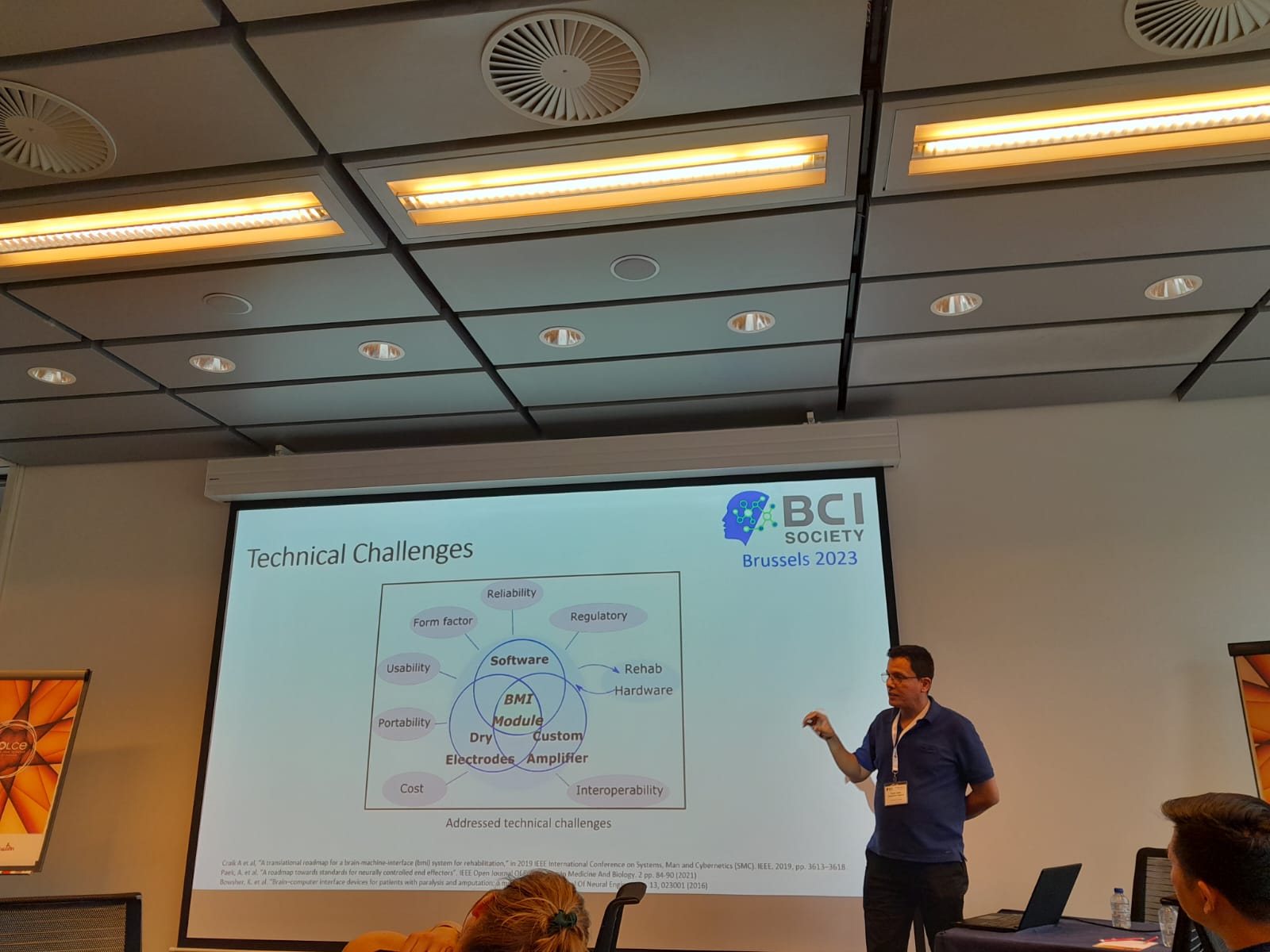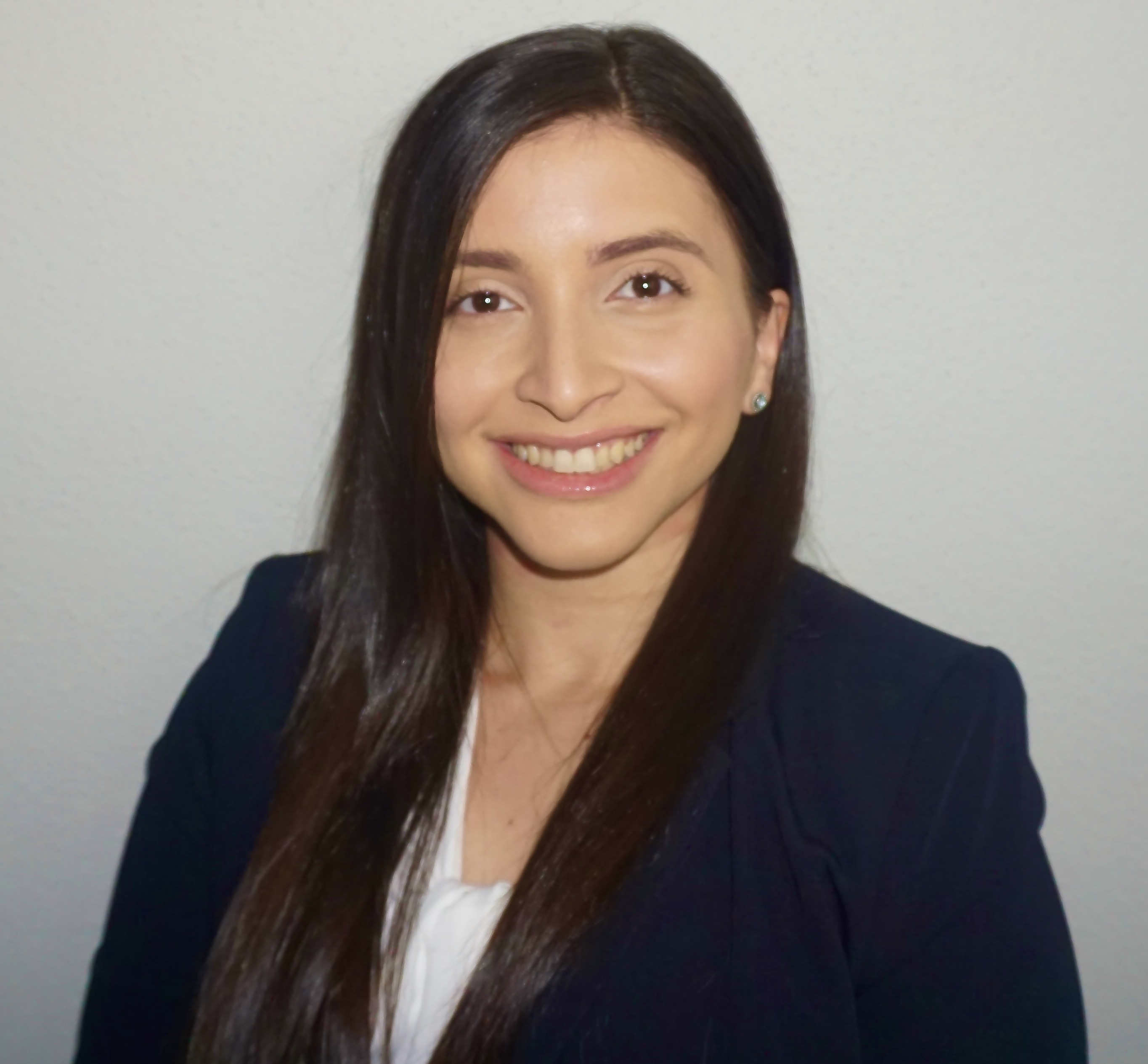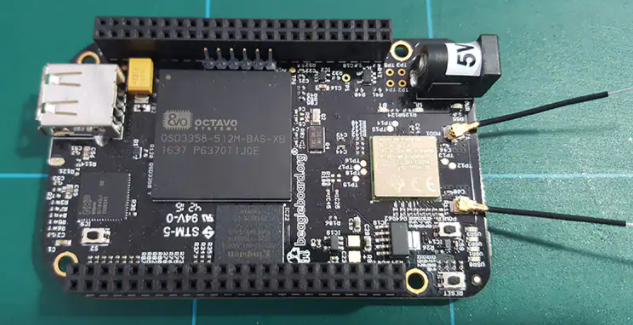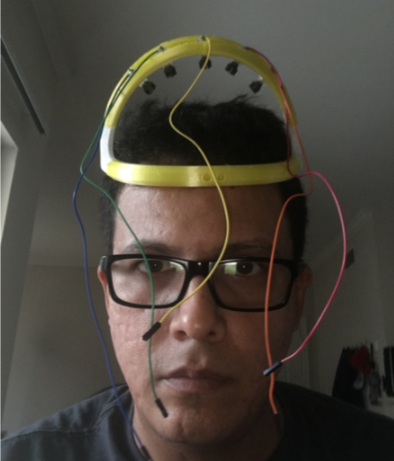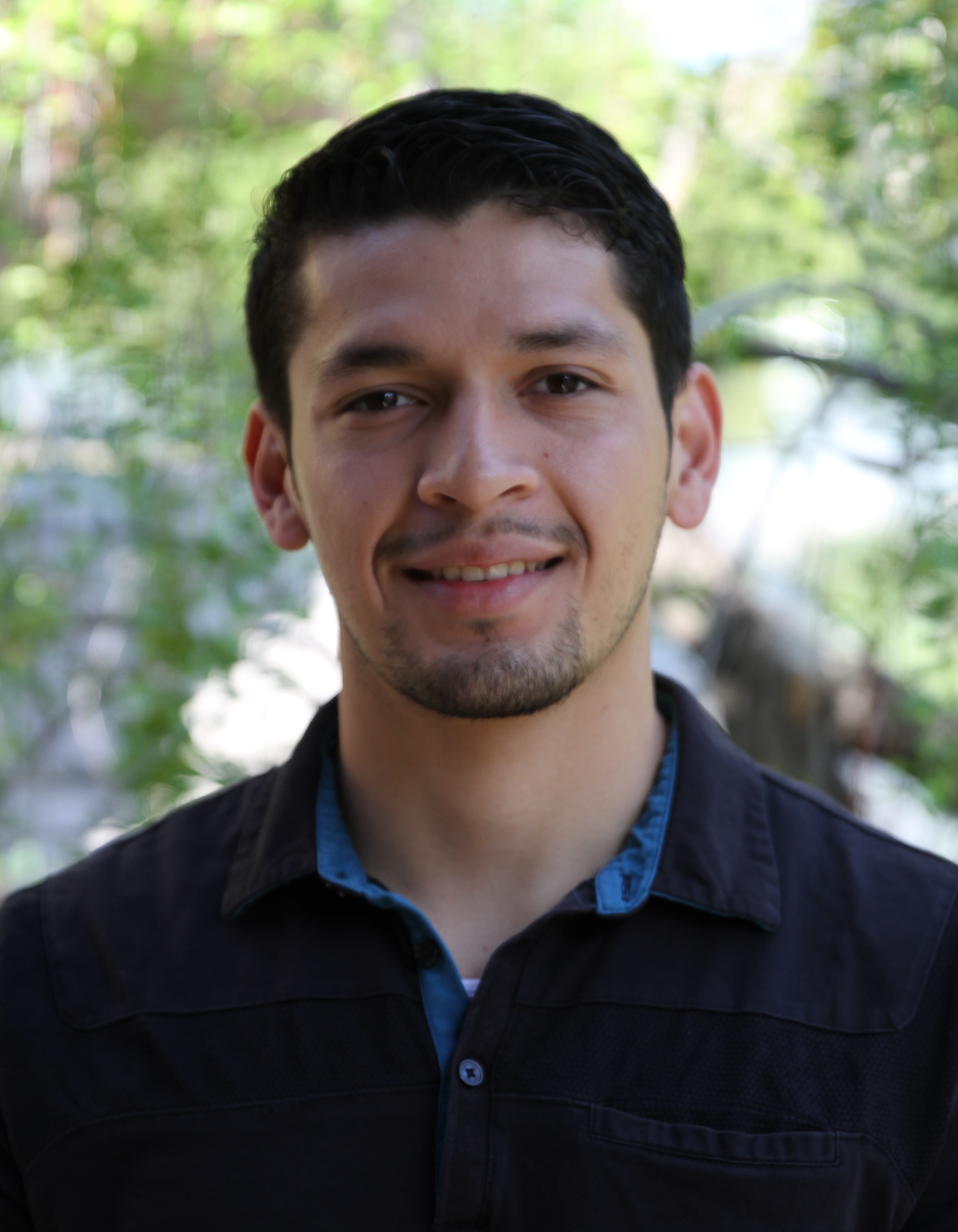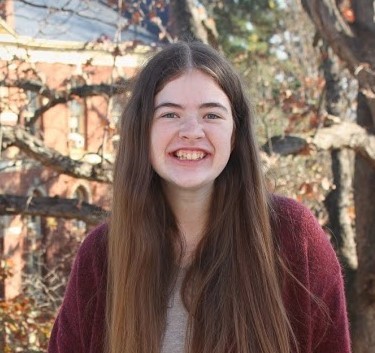Research Blog
Senior Design Students join the team!
A group of three senior design students Zach A. Harris, Nam T. Nguyen, and Ajibola F. Afolabi join the team to be mentored by Maxine A. Pacheco-Ramírez to work on NeuroEXO's spin-off on an emotion recognition headset.
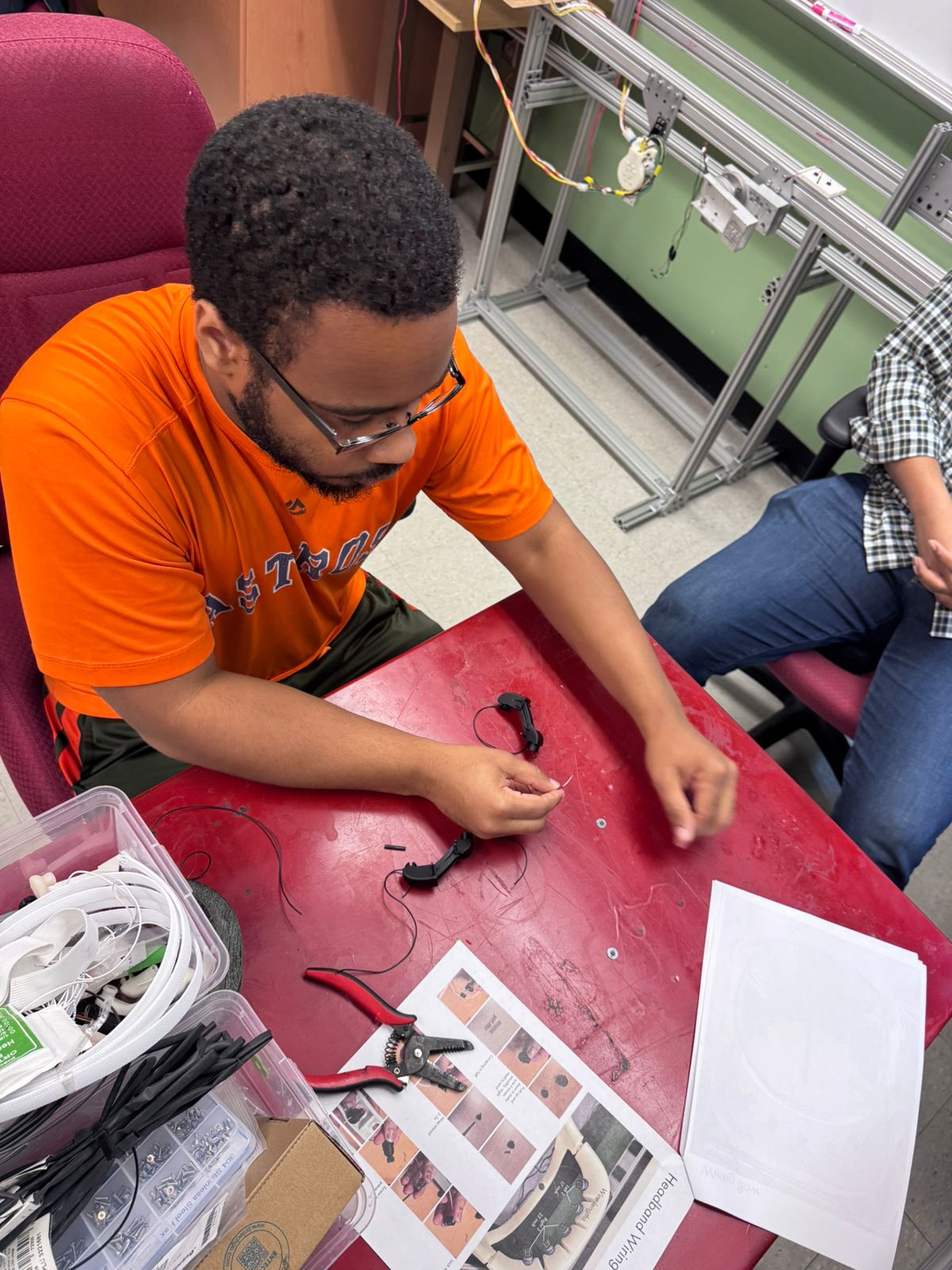
Lianne Sánchez-Rodríguez wins AIMBE Travel Award
Lianne Sánchez-Rodríguez wins the American for Medical and Biological Engineering (AIMBE) URM Ethnic Minority & Disadvantaged travel award to attend the AIMBE Public Policy Institute for rising leaders in Washington, DC.
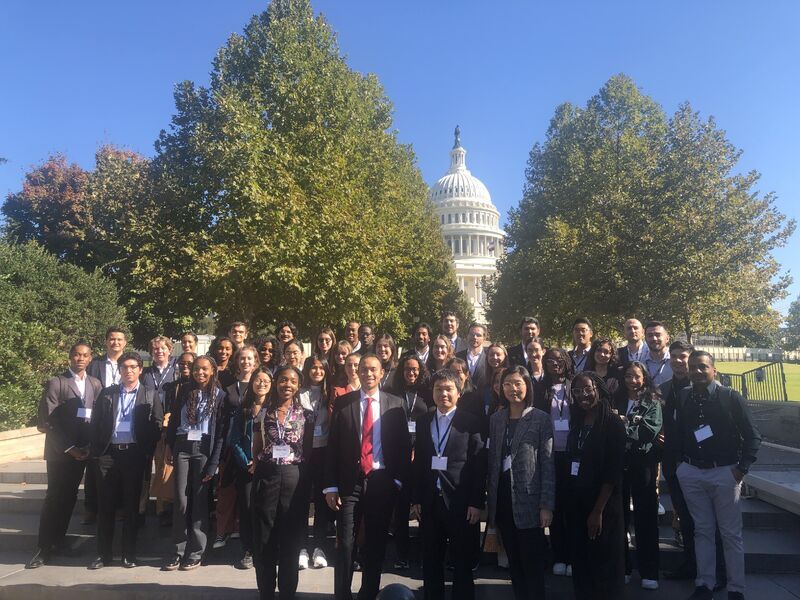
Lianne Sánchez-Rodríguez presents at SfN
Lianne Sánchez-Rodríguez presents at the 2024 Society for Neuroscience (SfN) the work titled "At-home Stroke NeuroRehabilitation with the NeuroEXO Brain-Machine Interface System."
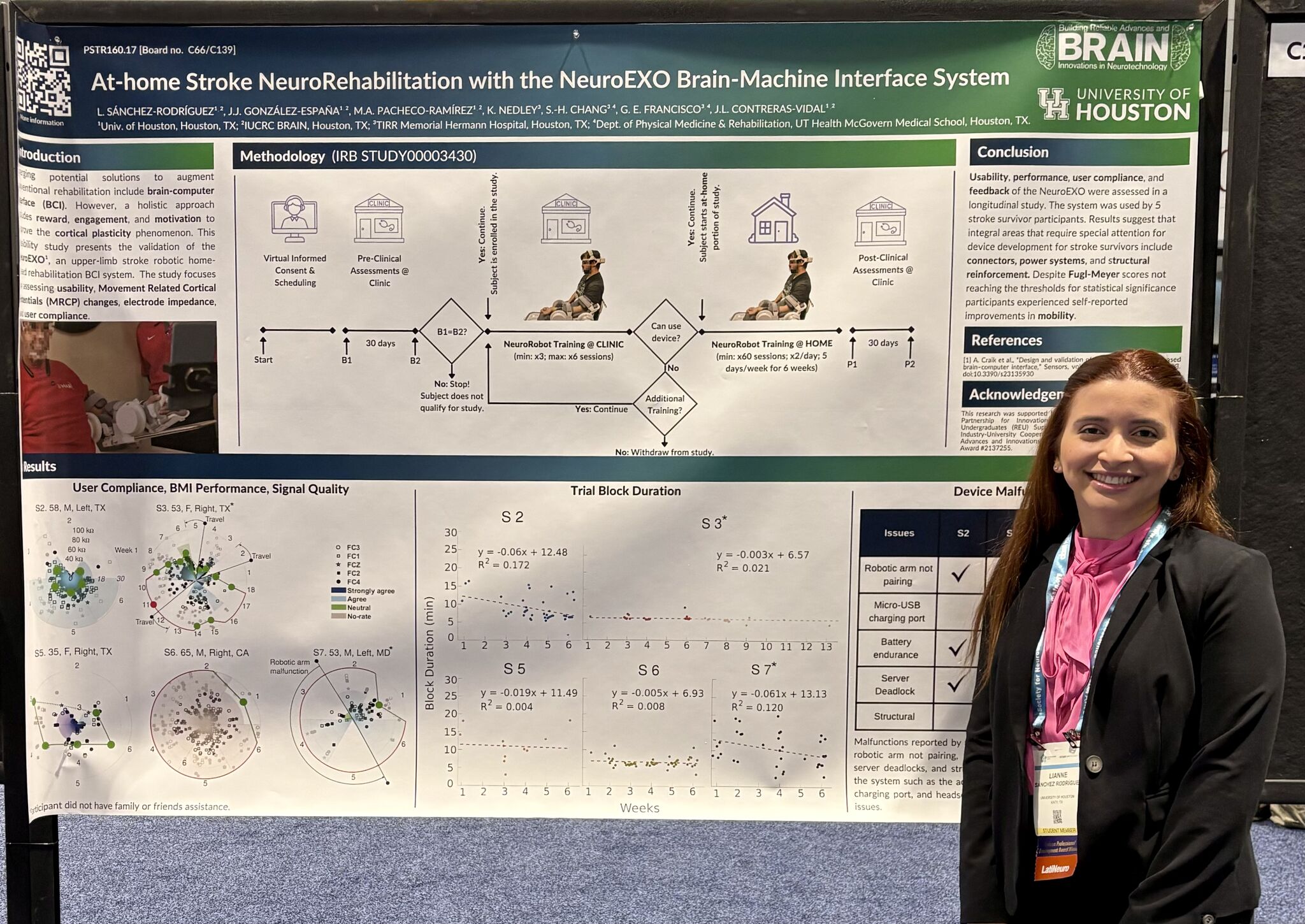
Lianne Sánchez-Rodríguez & Maxine A. Pacheco-Ramírez win TPDA
Both Lianne Sánchez-Rodríguez and Maxine A. Pacheco-Ramírez won the Trainee Professional Development Award (TPDA) for travel to attend the 2024 Society for Neuroscience (SfN) conference in Chicago, IL.
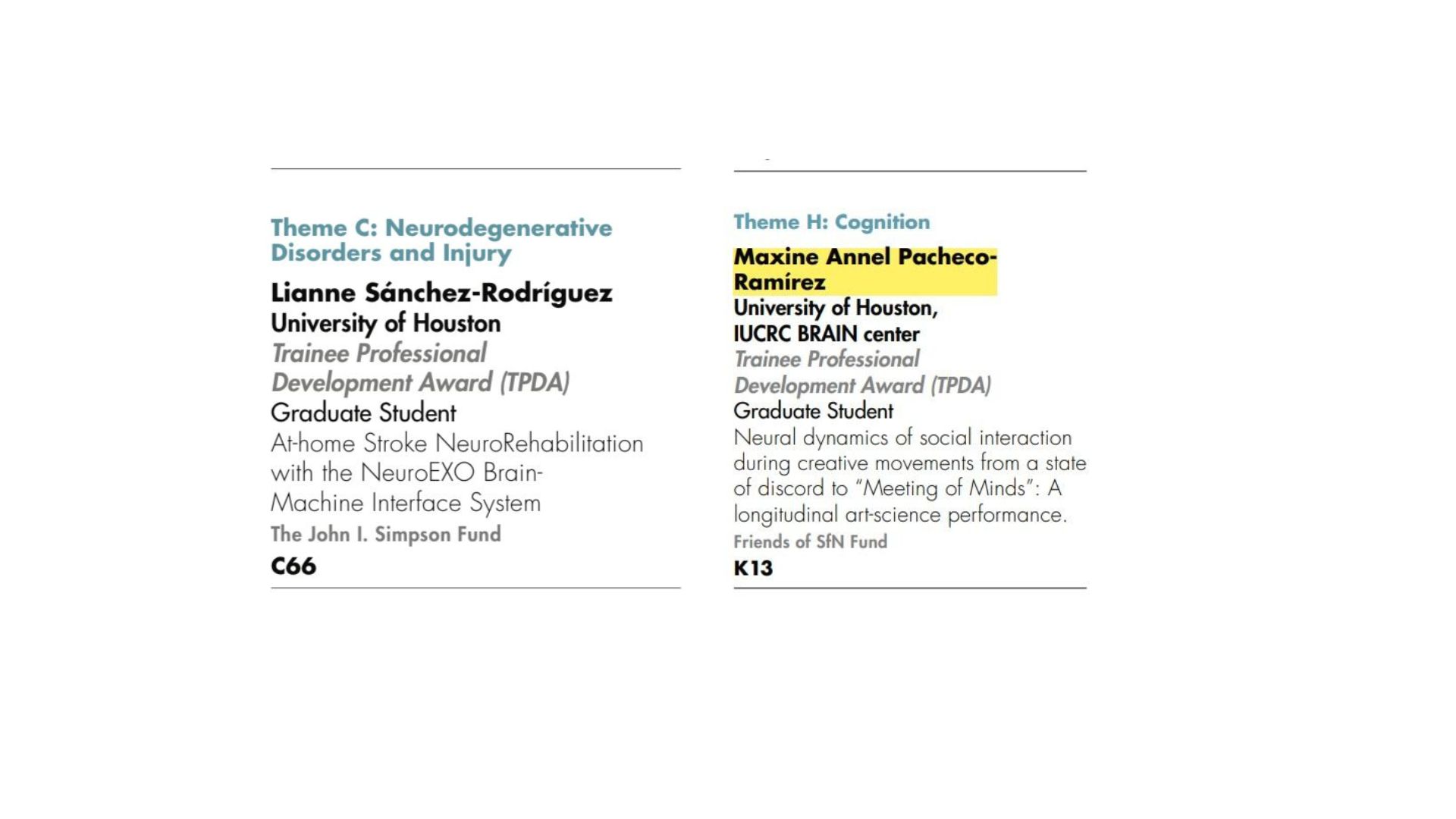
At-Home Longitudinal Study End
The system was successfully used by 10 participants at home, marking the successful completion of the at-home trials for a neurotechnology application.
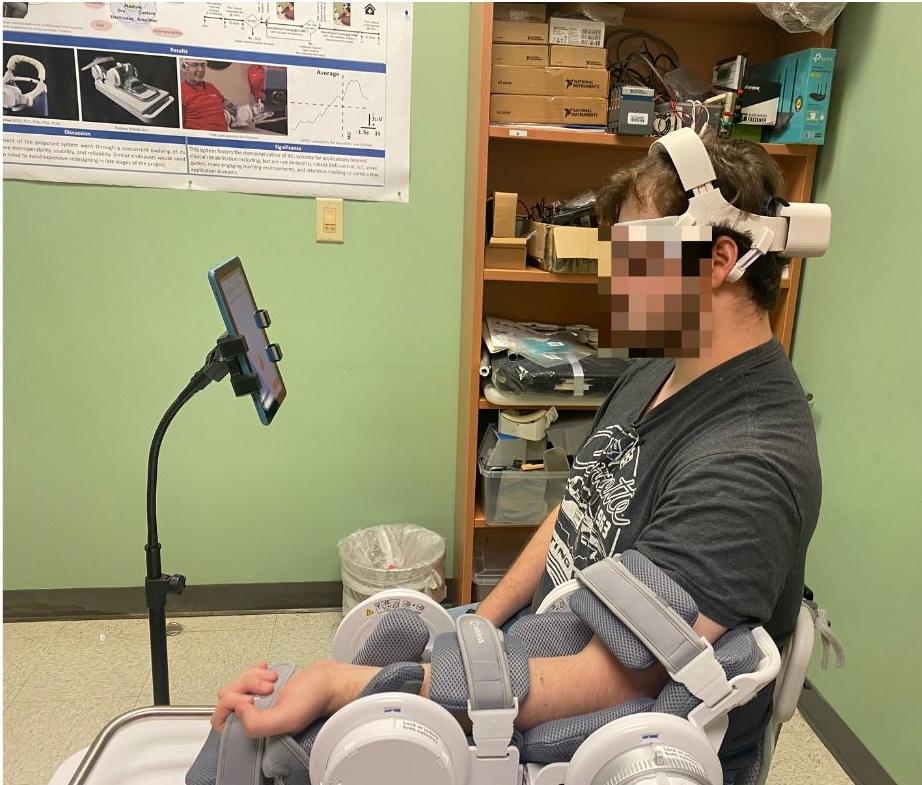
Lianne & Annel join RED Labs Accelerator!
Annel and Lianne joined the RED Labs Accelerator program, hosted at The Ion in Houston, with their NeuroEXO spin-off Mindspring. They took courses in market, start up, prototyping, patent, etc. At the end of the program they presented the start up pitch in front of approximately six hundred community peers including investors. They also prepared a booth for interaction for feedback and for community outreach.
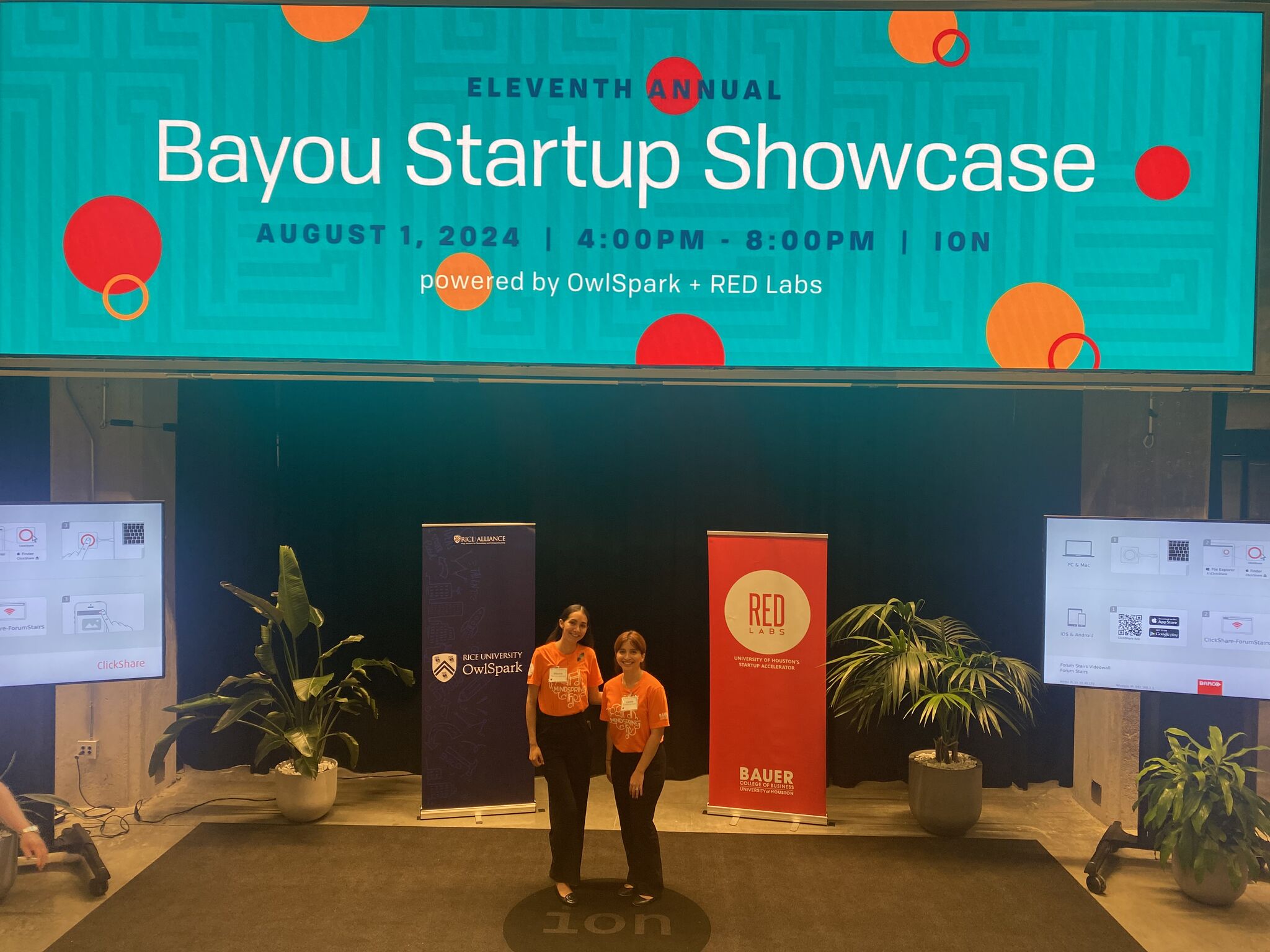
Diana Rodríguez and Morgan Feng join the team!
Diana – a science teacher with 20 years of experience, at CROEM School, a Puerto Rican boarding school specializing in science and math and Morgan Feng – a rising junior at St. Agnes Academy – joined the NeuroExo team for a six weeks research experience and mentoring (REM) at the University of Houston.
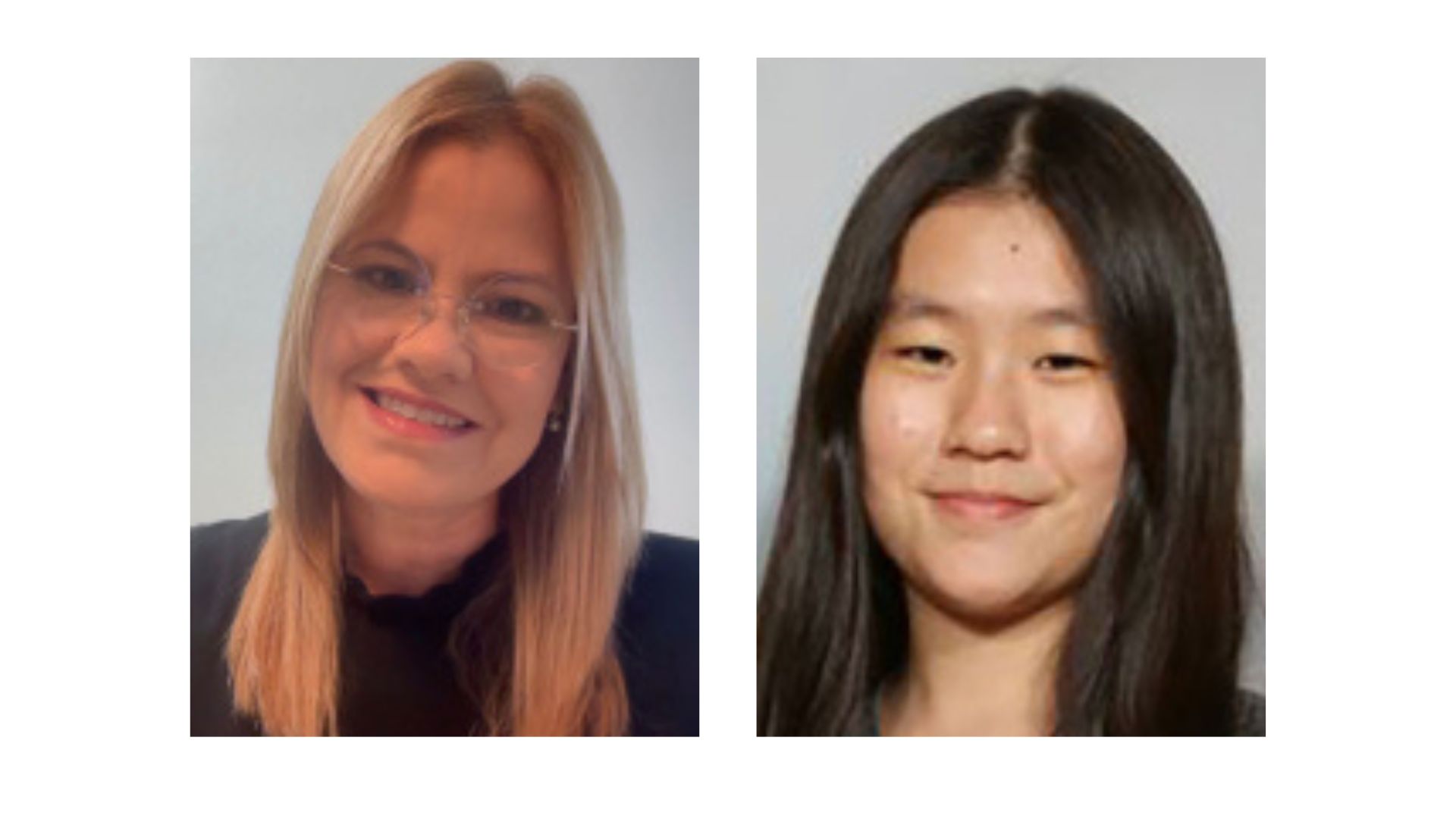
Juan J. Gonzalez-España defended his thesis!
Dr. Juan J. Gonzalez-España succesfully defended his thesis titled "Brain-eNet: Towards an Enabling Technology for BCI-IoT Systems". Congratulations Dr.!
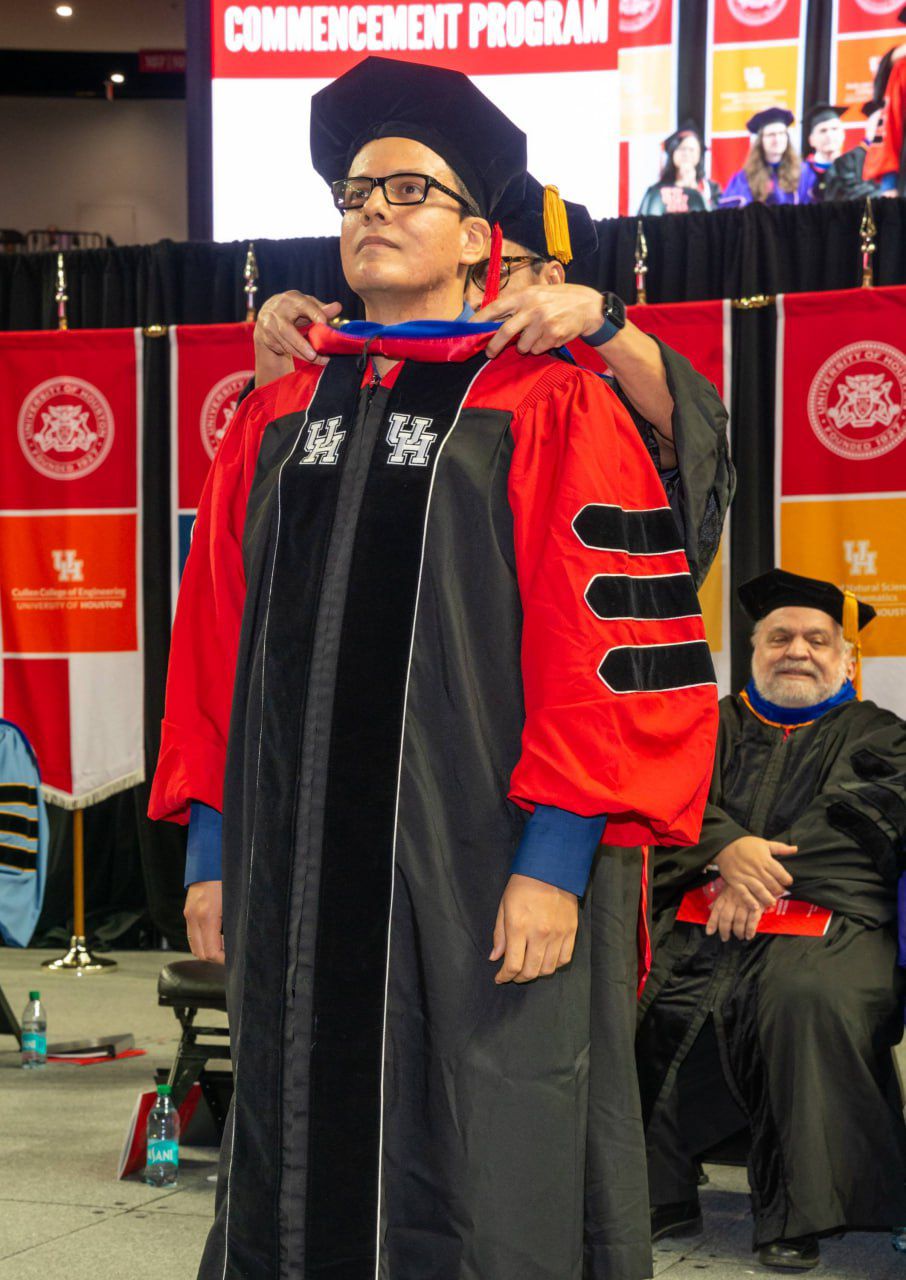
Senior Design Students join the team!
A group of five senior design students Jorge González, Laura Guzman, Urhum Syed, Marcoantonio Lopez, and Thinh Phan join the team to be mentored by Lianne Sánchez-Rodríguez to work on NeuroEXO's spin-off on an smart brain patch.
Jose Gonzalez-Espana gets IEEE Student Travel Award
Jose Gonzalez-Espana has received the IEEE Student Travel Award to attend the 2023 IEEE Conference on Systems, Man, and Cybernetics in Oahu, Hawaii to present three accepted papers: “Optimization of Electrode Configuration for the Removal of Eye Artifacts with Adaptive Noise Cancellation , “Brain-eNet: Towards an Enabling Technology for BCI-IoT Systems” and “Decoding Taste from EEG: Gustatory Evoked Potentials During Wine Tasting”.
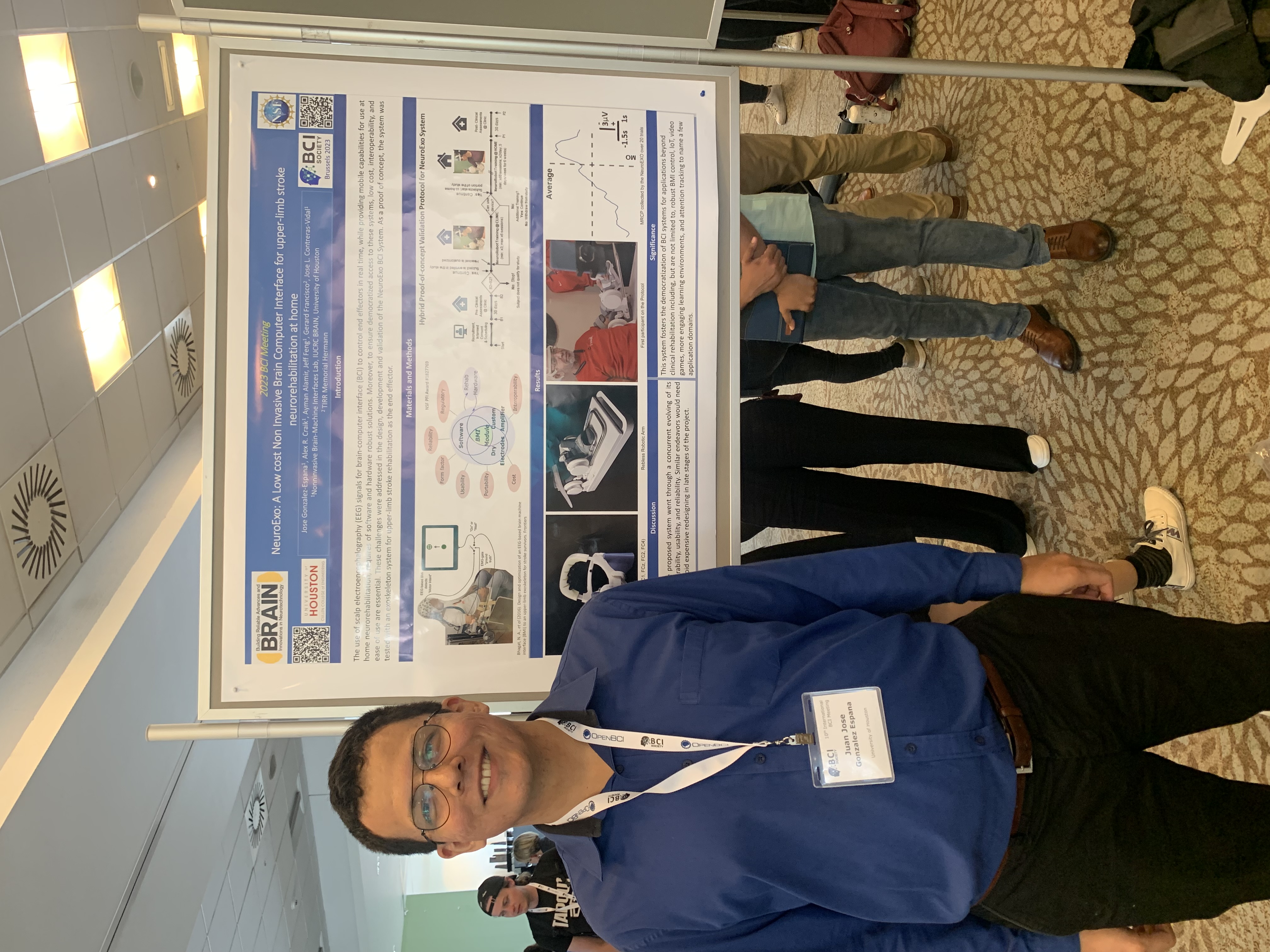
NSF SPRINT supplemental funding
PFI NeuroExo teams receives NSF SPRINT supplemental funding for supporting research in nascent translation! This award will allow the team to move toward technology commercialization and the creation of startups.
Maxine A. Pacheco-Ramírez joins the team!
Annel will be joining the team as a ECE PhD student. Her work will focus on helping the team on the participant trials and working on the development and testing of a NeuroEXO spin-off dedicated to emotion recognition.
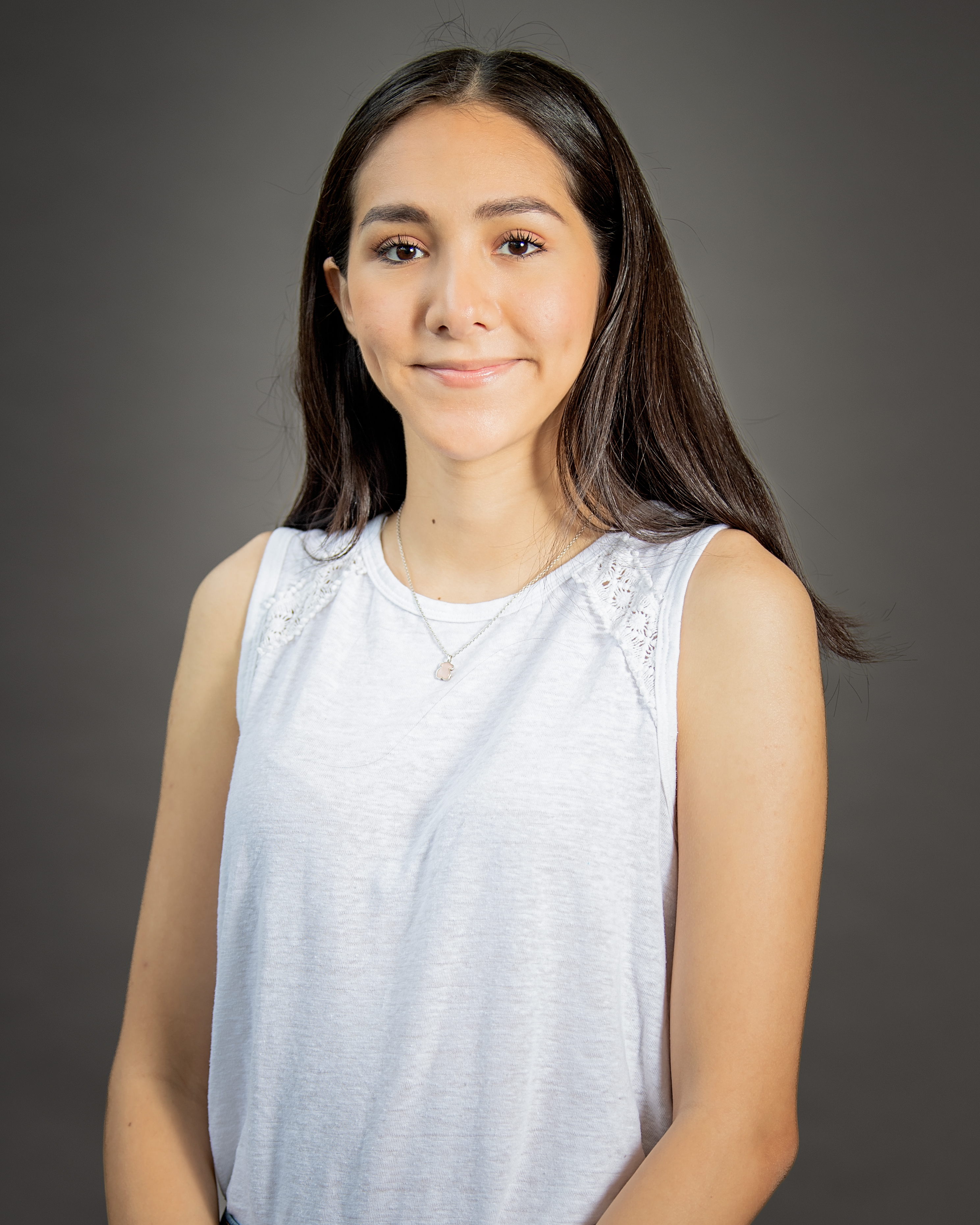
Jeremie Noel joins the PFI NeuroExo team!
Jeremie Noel - a student at the graduate engineering school of Nantes University, France, specialized in Electronic and Digital technology – joined our team in an international research internship.
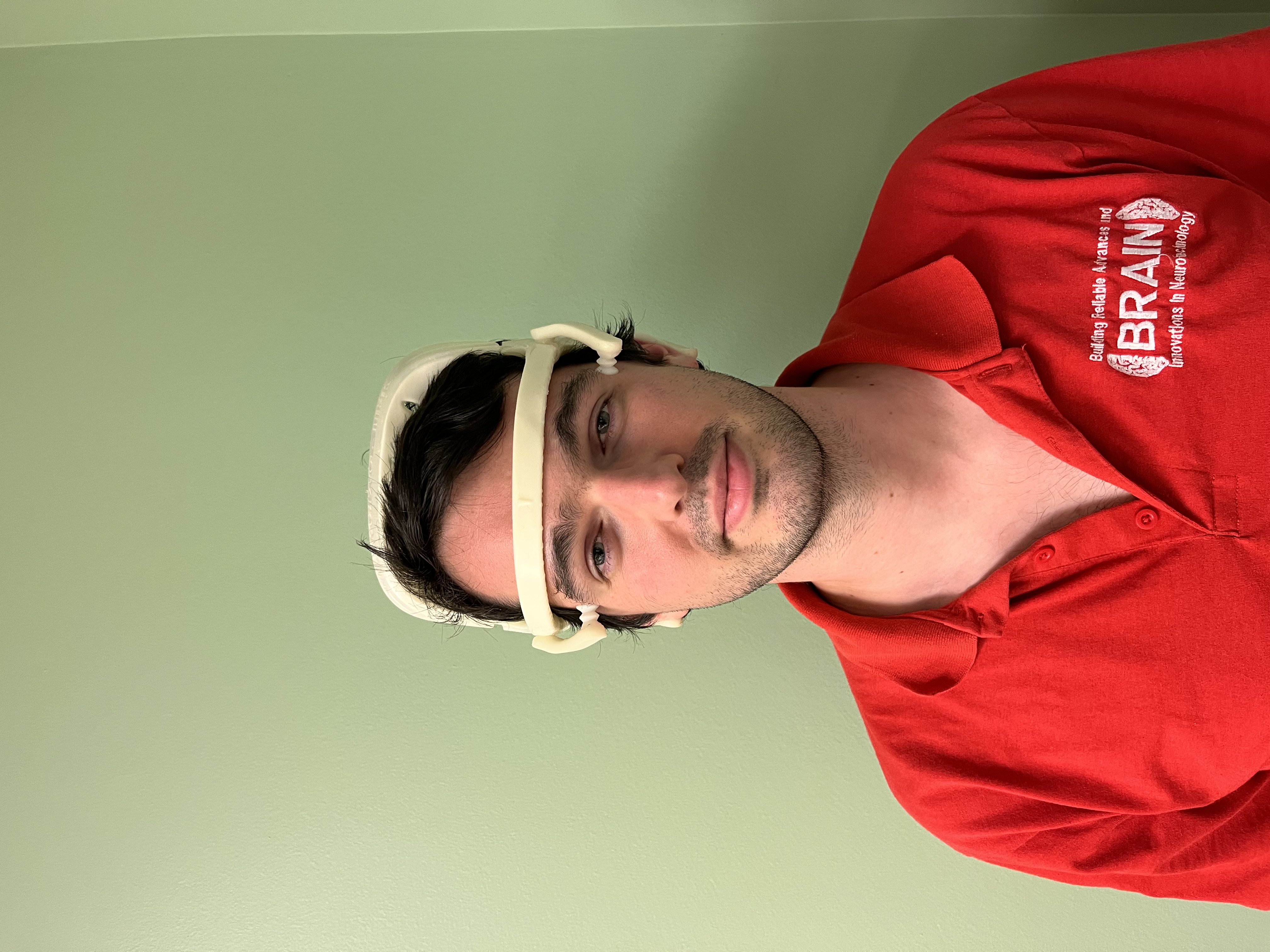
REU students join the PFI NeuroExo team!
Alana Maluszczak – a Biomedical Engineering and Applied Mathematics Double Major from the University of Arizona – and Jacob Mendez – a Mechanical Engineering Sophomore at the University of Central Florida – joined the NeuroExo team for a ten weeks research experience for undergraduate (REU) at the University of Houston.
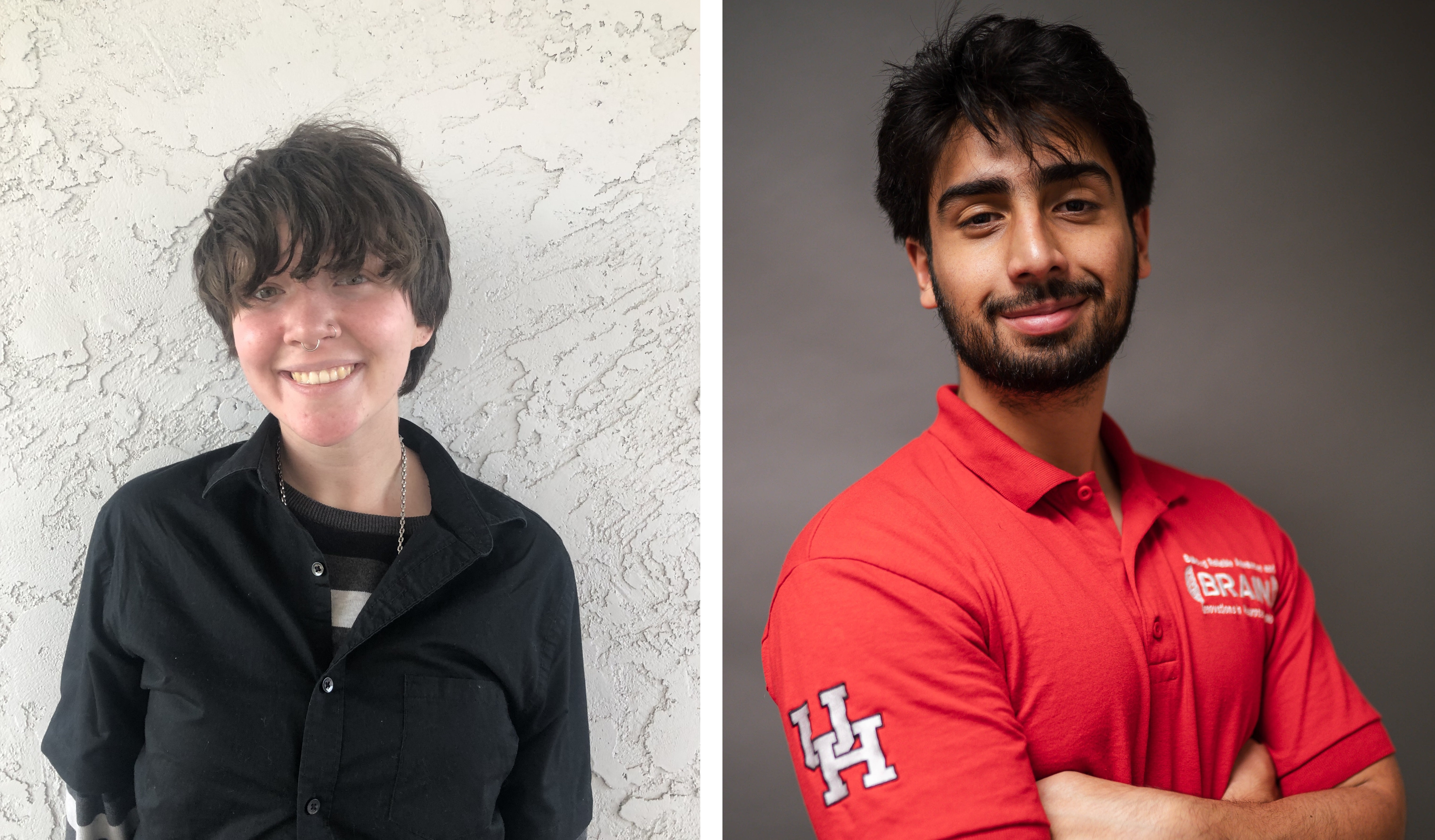
Longitudinal Trial Begin
Longitudinal trial begin with the NeuroEXO’s first neurally-intact participant. The trials are made up of 5 sessions at the laboratory, where the participant will get accustomed to the system and the system collects data to train a machine learning model. Following the training period and assuming the participant opts to continue, the participant will take the system home for 4 weeks of at-home trials.
Jose Gonzalez Espana gets BCI Award
Jose Gonzalez-Espana has received the Student and Post-doc Travel Award to attend the 10th International BCI Meeting in Brussels, Belgium to present the Master Class presentation titled “NeuroExo: A Low-cost Non Invasive Brain Computer Interface for upper-limb stroke neurorehabilitation at home".
Lianne Sánchez-Rodríguez joins the team!
Lianne will be joining the team as a ECE PhD student. Her focus on the project is to implement an Serial Peripheral Interface (SPI) that is able to connect to two devices of the custom amplifier. Including connecting to the Amplifier and the Inertial Measurement Unit (IMU) whilst improving sampling frequency.
Sarah Wong joins the team
My project is to 3D print and assemble the EEG headsets so that they can be used for testing. Parts in contact with the patient are made of medical-grade flexible resin. The main housing is made from nylon, the gears are made of polycarbonate, and the connecting plate is made from PLA. For assembly, I need to attach wires to the probes and insert them into the parts, assembling everything except the electronics in the back housing.
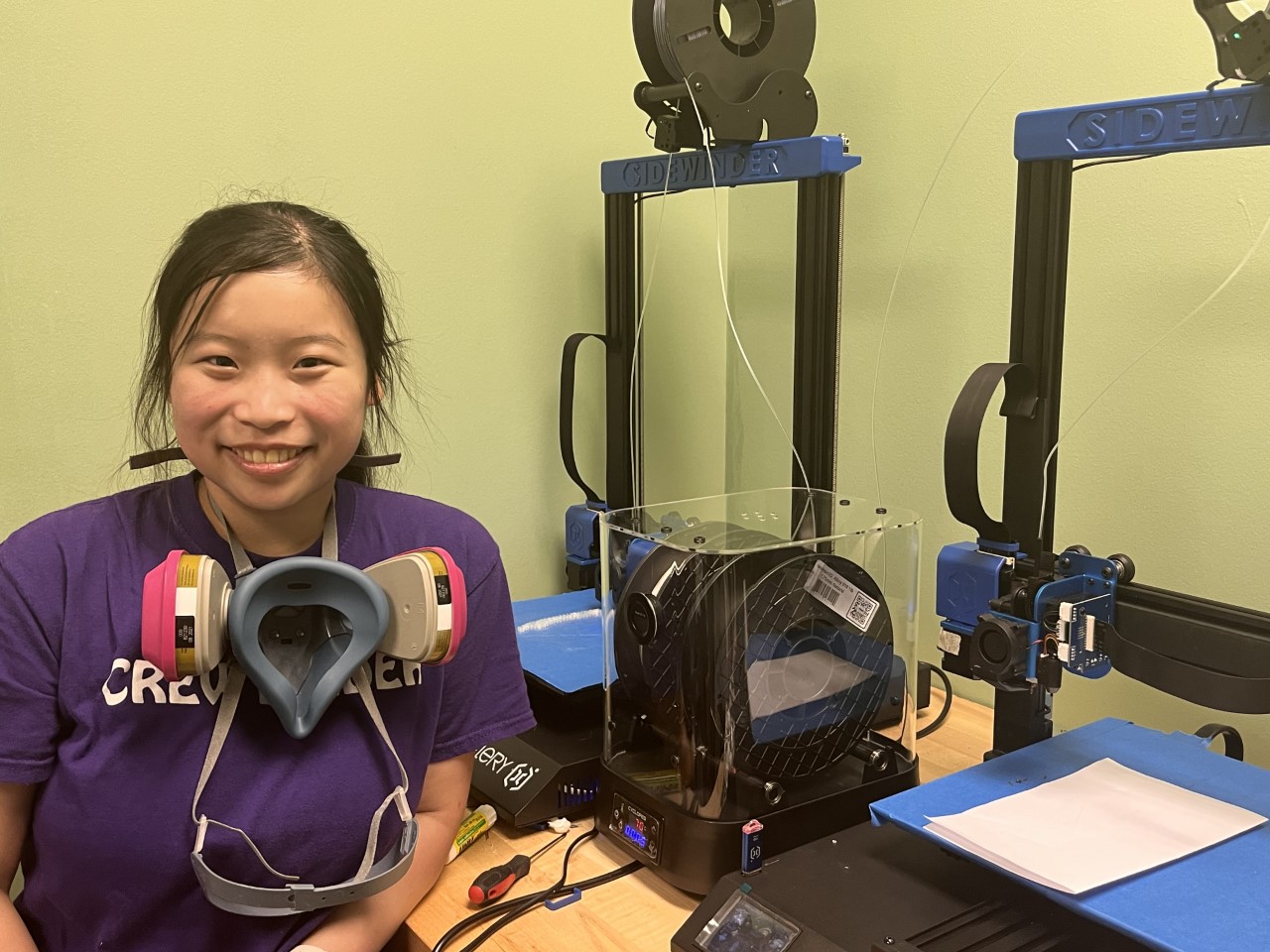
At-Home Trials End
The system was successfully used by the participant at home without a physical therapist, marking the successful completion of the world’s first at-home trials for a neurotechnology application. To mark the occasion, Houston’s KPRC News channel 2 interviewed the participant to ask him how he felt about using the system.
H.Robotics Visits the Lab
H.Robotics, the developer for the Rebless robotic arm, a crucial component of the NeuroEXO system, visited the lab to discuss future collaborations with the University of Houston team. The picture shows Andrew Chang and Christine Ahn from H.Robotics trying out the final version of the NeuroEXO for the first time.
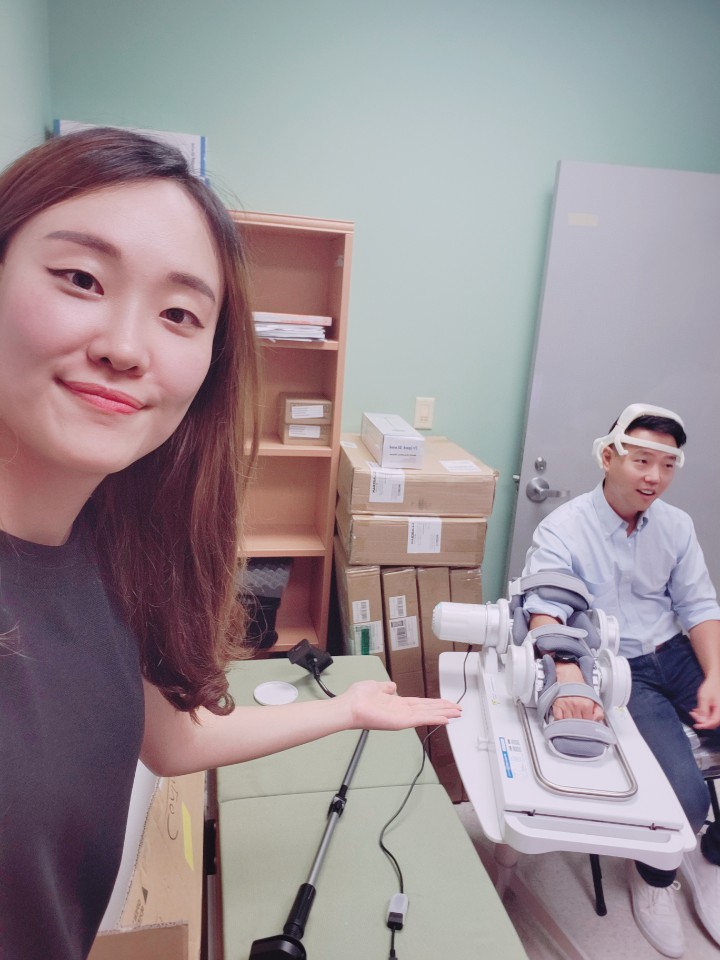
Poster Presentation at the 8th Annual BRAIN Initiative Meeting
Alexander Craik, the NeuroEXO’s lead developer, presented a poster describing the progress for the NeuroEXO system at the NSF BRAIN Initiative meeting. For his efforts, he received an honorable mention award!
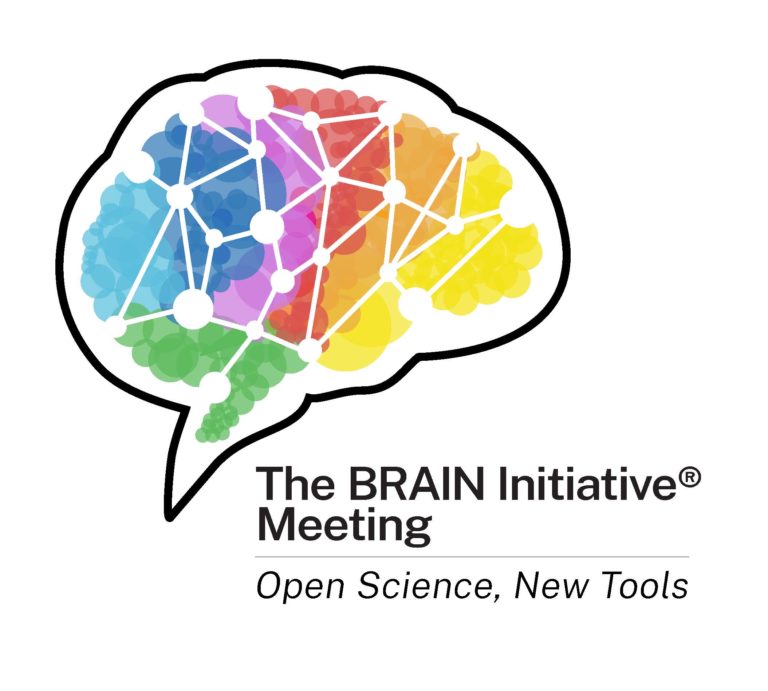
At-Home Trials Begin
The clinical trials were deemed a success, so the system moves to the participants home for the start of the 6-week at-home phase. During these 6 weeks, the participant will use the system 5 days / 10 sessions a week. Following the at-home trials, the participant’s motor ability will be assessed.
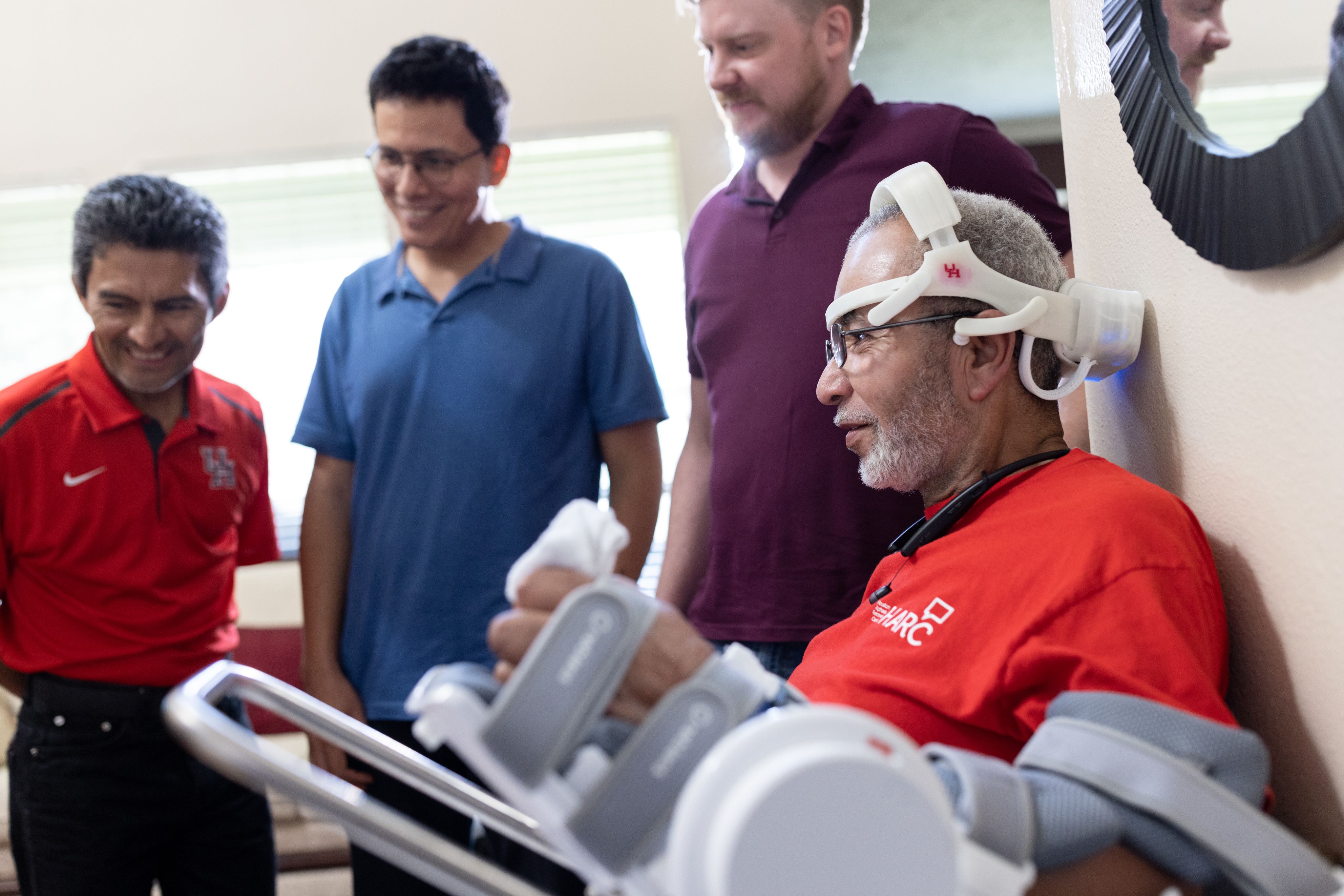
Clinical Trials Begin
Clinical trials begin with the NeuroEXO’s first participant. The clinical trials are made up of six sessions at the clinic, where the participant will get accustomed to the system and the system collects data to train a machine learning model. Following the clinical trials and assuming the participant opts to continue, the participant will take the system home for 6 weeks of at-home trials.
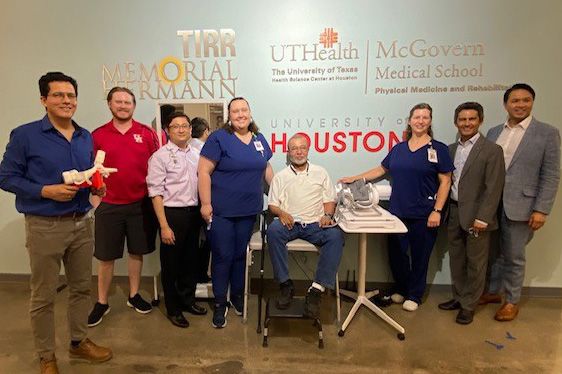
Benchtesting Phase Complete
Following a successful internal benchtesting phase, the system has been finalized and the team prepares for clinical trials with our partners at TIRR Memorial Hermann.
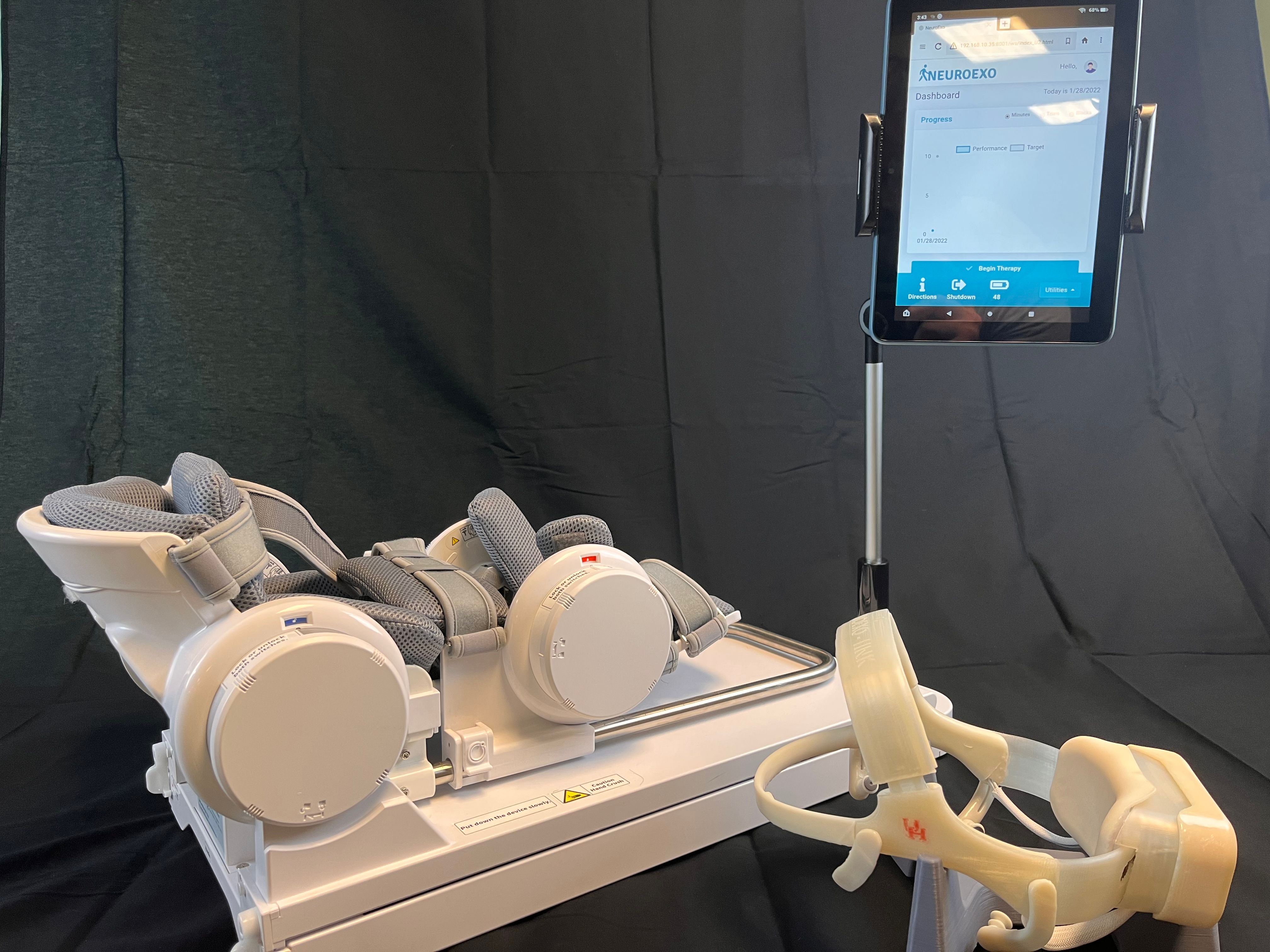
Internal Benchtesting Phase
The start of August marked the beginning of our internal benchtesting phase. During this phase, the technical team tested the system, recorded any software or hardware bugs, and worked hard to eliminate them. One significant bug was found near the end of benchtesting while we were compiling the software to run on the wireless unit alone (rather than running the system while connected to the development PC). We found that several of the BBB’s failed to connect to the robotic arm or the amplifier. After several scary days, we eventually understood this to be due to differences in the BeagleBone Debian operating system version. After fixing this issue, we were able to demonstrate the entire system for Dr. Contreras-Vidal, who acted as our test subject.
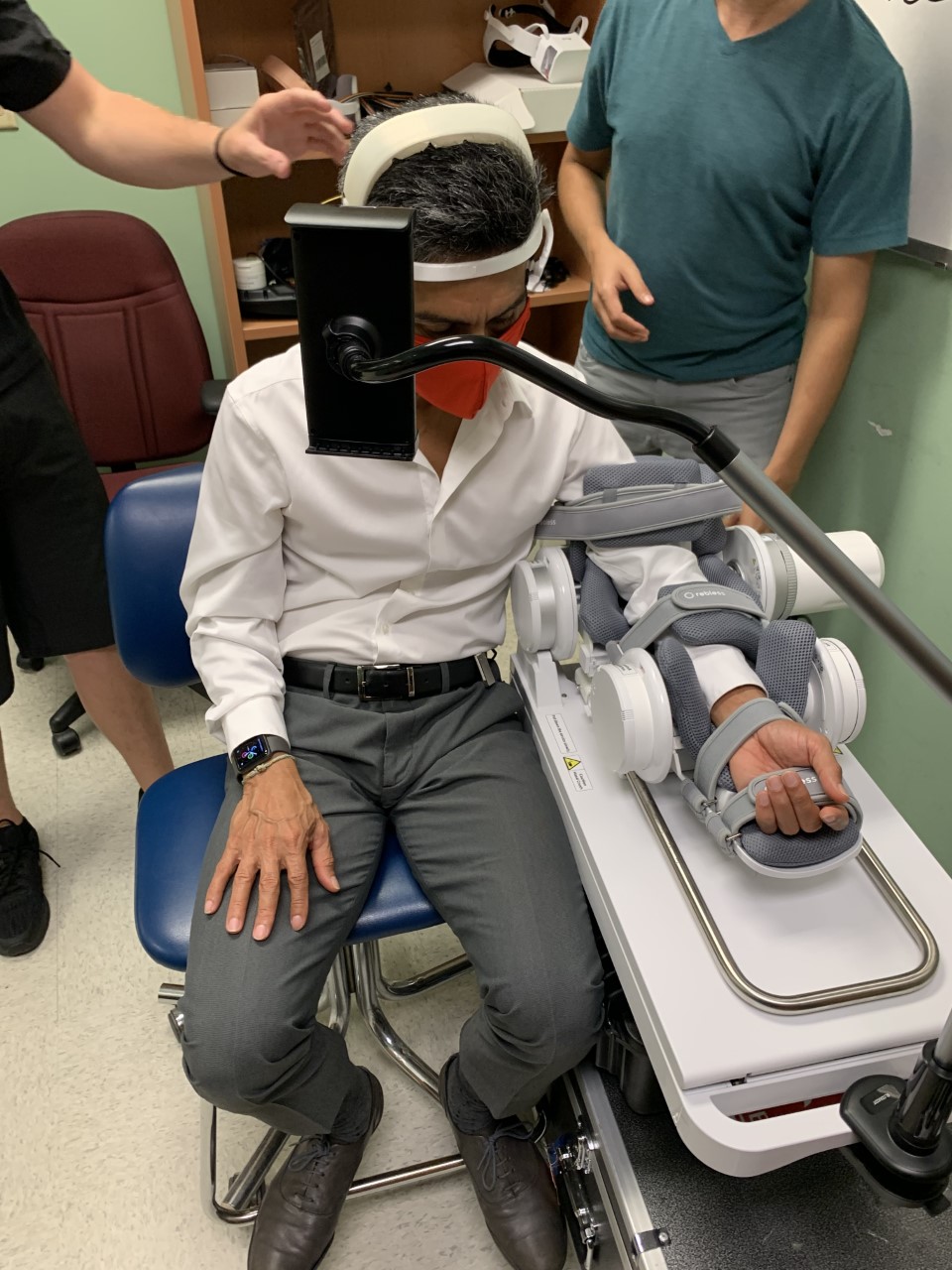
Completely Portable System
One unfortunate characteristic of the BeagleBone Black board is that it requires an ethernet connection for wifi connectivity. This necessarily means that our system would not be entirely portable. Fortunately, this year the manufacturer of the BBB released a wireless BBB. A portable system is preferable for many reasons, such as user friendliness and ease of headset adjustment, so we decided to purchase a wireless unit. With a few minor adjustments, we were able to port our system to the wireless board and communicate as expected between all pieces of hardware wirelessly.
User Interface Development
With the BeagleBone Black board (BBB), we were not able to use the native LabVIEW user interface capabilities. Instead, with the use of a LabVIEW web service, we began the development of a graphical user interface (GUI) for our system. For the front-end design, Hypertext Markup Language (HTML), JavaScript (JS), and Cascading Style Sheets (CSS) have been used. The front-end interacts with the BBB through web resources (global variables) that had been defined in LabVIEW. The front-end was split into a couple of web pages. Each web page has its own HTML, JS, and CSS codes as needed, with specific care given to effective visual feedback mechanisms and general user friendliness. The system has been initially tested using the latest versions of the browsers Google Chrome and Microsoft Edge. Further UI development will continue as we receive feedback during internal and external benchtesting.

Interpolation for Constant Sampling Frequency
Moving to the BeagleBone processing unit with the LINX LabVIEW toolkit is an important step towards making the NeuroExo cost effective, but it does not come without its set of challenges. One such challenge is in obtaining a constant sampling frequency. This is crucial for EEG signal analysis as the processing pipeline requires spectral (or frequency) analysis. However, with the LINX LabVIEW toolkit, the SPI communication tools (the protocol designed for our amplifier) require the system to send data to receive data. While the amplifier was designed to send signals at a constant sampling frequency, it requires a single command, rather than a command for every set of EEG samples. To achieve a constant sampling frequency, we instead sample at a varying rate and then interpolate the time points we need for our application.
Difficult Lessons during Firmware Development
Low cost commercial translation of research is not an easy task as the system integration of various hardware and, at-times open-source, software may lead to conflicts. We selected LINX LabVIEW toolkit so that we could reduce recoding efforts by using our previously written LabVIEW code on the BeagleBone Black. However, this specific toolkit was developed initially as an open-source framework, so extensive testing across different processing boards just does not exist. For this reason, certain port restrictions were not immediately evident when we initially designed the amplifier circuit. Rather than write firmware in a different language such as C, which carries with it significant compiling issues for the BeagleBone Black, we opted to form temporary hardware connections, which allowed us to bypass the restrictions. These changes allowed us to correctly configure and communicate with the amplifier in LabVIEW. Our next step is tweaking the configuration of the amplifier and full system bench testing.
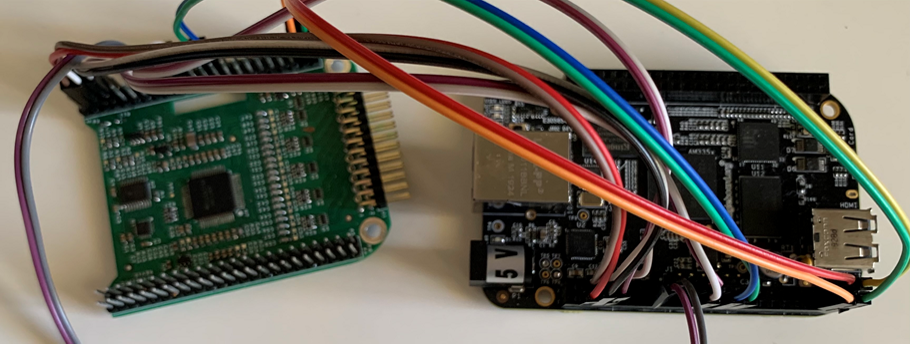
Custom Amplifier Design and Integration with Beagle Bone Black
An important characteristic for an at-home stroke rehabilitation device is low cost. To achieve this constraint, rather than processing through a commercial amplifier and processing board, which are prohibitively expensive, we’ve designed a custom EEG amplifier for integration with a commercial open-sourced processing board- the Beagle Bone Black. For integration, we’ve joined with a third-party designer, Stryker-Tech (www.Stryker-Tech.com), who assisted us in the development of a combined EEG amplifier and Beagle Bone Black processing board (https://www.beagleboard.org/black). Pictured is our original amplifier design during testing and the intermediate amplifier cape. The next step is to bench test the board for functionality, designate components for removal, and work with our partners at Stryker-Tech to reduce the form factor for our final design.
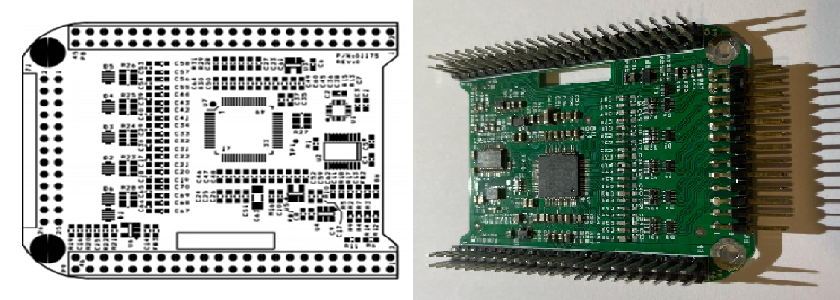
New Headset Revision
The developers of the custom EEG headset have been busy this year! With collaboration from the amplifier development team, extensive bench testing has been accomplished and the resulting optimization has led to several new revisions for the headset. The below exploded view of our headset has been 3D printed for continued development of the system as a whole.
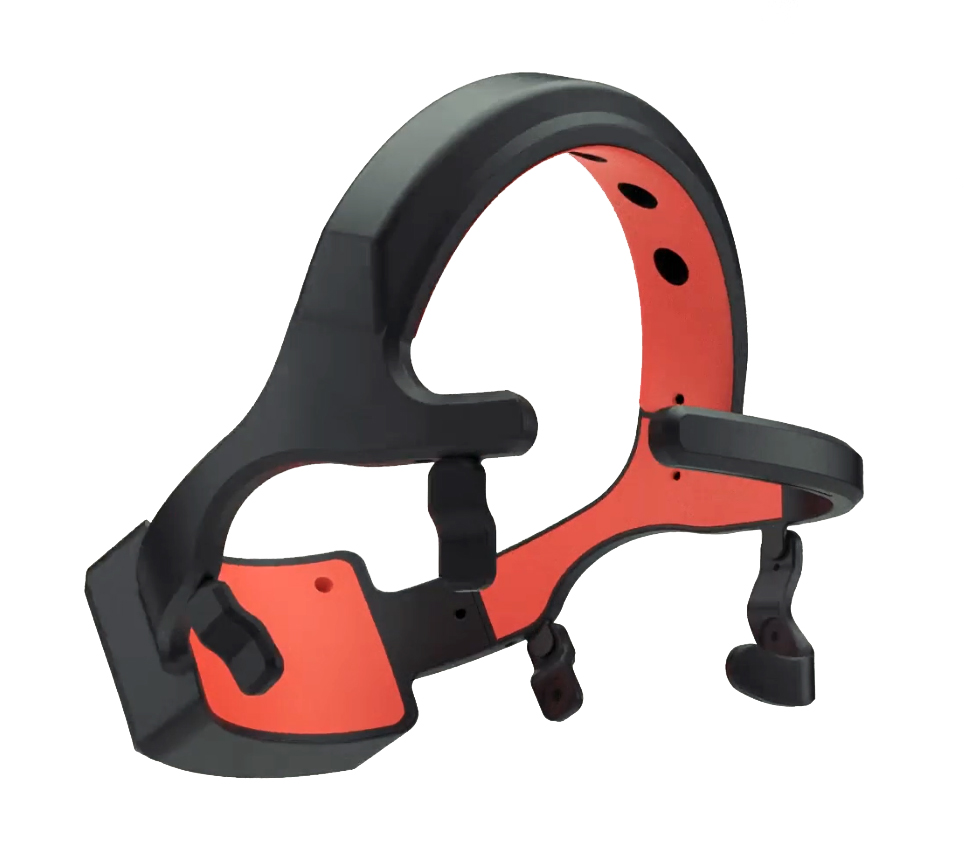
Bench Testing during a Pandemic
The dangers due to COVID-19 have affected all industries around the world, and this team’s collaboration is no different. Effective development of a complex system between an interdisciplinary team was difficult in an entirely remote environment and these new experiences quickly led to several lessons learned. One such lesson is presented with the following picture, where the expected head sizes between different team members was dramatically underestimated.
It became clear that we would need to evolve our methods of working. As our collective understanding of effective preventative measures for COVID became clear, our team moved back inside when necessary, with masks and/or social distancing in place. This led to a significantly more effective working environment, with the team quickly iterating through several headset revisions.

2020 Summer Addition - Niell Gorman

Niell Gorman joins the team as a 2020 REU student under Dr. Feng. He will support the development and testing of the custom EEG headset designs, working closely with Dr. Feng to ensure quality and user comfort.
2020 Summer Intern - Vinay Mannem

My name is Vinay Mannem and I am currently a rising senior at The Woodlands College Park High School. I am a high school intern on the NeuroExo project. I have a strong programming background in Java and Python as well as experience working with microprocessors. Through my experiences with FIRST Robotics and Science Fair I have developed the skills necessary to become a strong programmer in the field. Aside from my programming skills, I also have exposure to Solidworks CAD and other engineering tools and technology. Working on a project like this one is an immense opportunity to develop and hone my skills while impacting society. I have always tried to bridge gaps between able people and people with disabilities with my belt for the blind and other science fair projects, but this project always me to contribute to society in an area of high academic standards which is an exciting opportunity. I believe that it is important for people to put their minds to helping lesser able people to gain new opportunities and that is exactly what this project is doing.
2020 REU Student - Oziel Román Cantú López
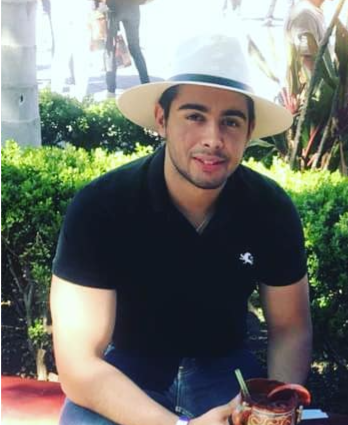
My name is Oziel Román Cantú López and I am a part of the team working in the Noninvasive Brain-Machine Interface Systems Lab as an international trainee for the 2020 summer at University of Houston. I am an undergraduate biomedical engineer senior that have been working on the design and implementation of many different medical and non-medical devices; my programming skills, curiosity and problem solving thinking may have brought new ways to analyze and optimize some signal processing processes. The project we are working on is related to rehabilitation of stroke survivors. When I was admitted to the project I couldn’t be more excited because for the last two years I’ve been planning on getting my own rehabilitation clinic; working on this project as an initial approach to the topic meant something big for me as I can now start helping people and get the knowledge to try to give them the quality of life they deserve by creating the technology of the future.
2020 REU Student - Kameron Moore
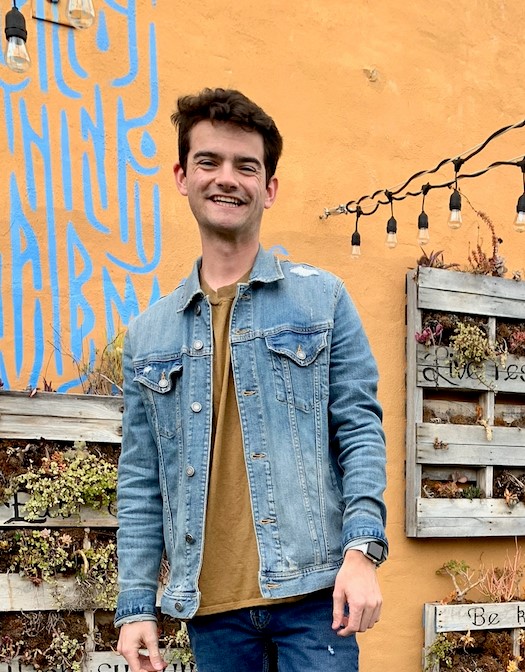
My name is Kameron Moore and I am a rising senior pursuing undergraduate degrees in Biomedical Engineering and Spanish Linguistics from Arizona State University. This summer, I am participating in the Houston REU program working with Dr. Pepe Contreras-Vidal and PhD student Alex Craik as my supervisors on the NeuroExo project. I have previous research experience studying ADHD characteristics at Arizona State University in the Memory and Attention Control Lab where I aided in collecting and analyzing human subject trial data. In the private sector, I have been able to work with biomedical device manufacturer, Cranial Technologies, Inc., in the research and development department gaining knowledge on producing working prototypes as well as exposure to programming in MATLAB, 3D printing, and materials testing. From my coursework and position as an Undergraduate Teaching Assistant in a product design lab at ASU, I have experience working with a variety of technologies collaboratively and leading others in academic projects. I thoroughly enjoy working on real-world problems to discover real-world solutions and am honored to be a part of Houston’s summer REU program where I have been given the opportunities to expand my knowledge of brain-computer-interfaces and aid in the development of a technology that will improve the lives of stroke survivors.
2020 REU Student - Edgar Guzman
My name is Edgar Guzman, 5 th year electrical and computer engineer with a minor in math currently attending California State Polytechnic University, Pomona. I am part of the REU program at the University of Houston, working in Dr. Jose Luis Contreras laboratory. Given my previous research experience that emphasized on software, I believe I am able to contribute with coding in this project. Growing up with physical difficulties, I have always dreamed of being able to use engineering to make a social difference. Thus, being able to work on a project that assist individual that had suffered from a stroke allows me to feel accomplished, as I am making a positive impact on the world.
Welcome to Our 2020 Summer Interns
This summer, the NeuroExo project will have the support of four interns. This includes two students from the Research Experiences for Undergraduates program (Edgar Guzman and Kameron Moore), a graduate student (Oziel Román Cantú López), and a local high school student (Vinay Mannem). While the pandemic has forced these internships to switch from in-person experiences to a virtual program, we expect these students will have a rewarding experience in gaining and improving the skill sets necessary for successful academic research.
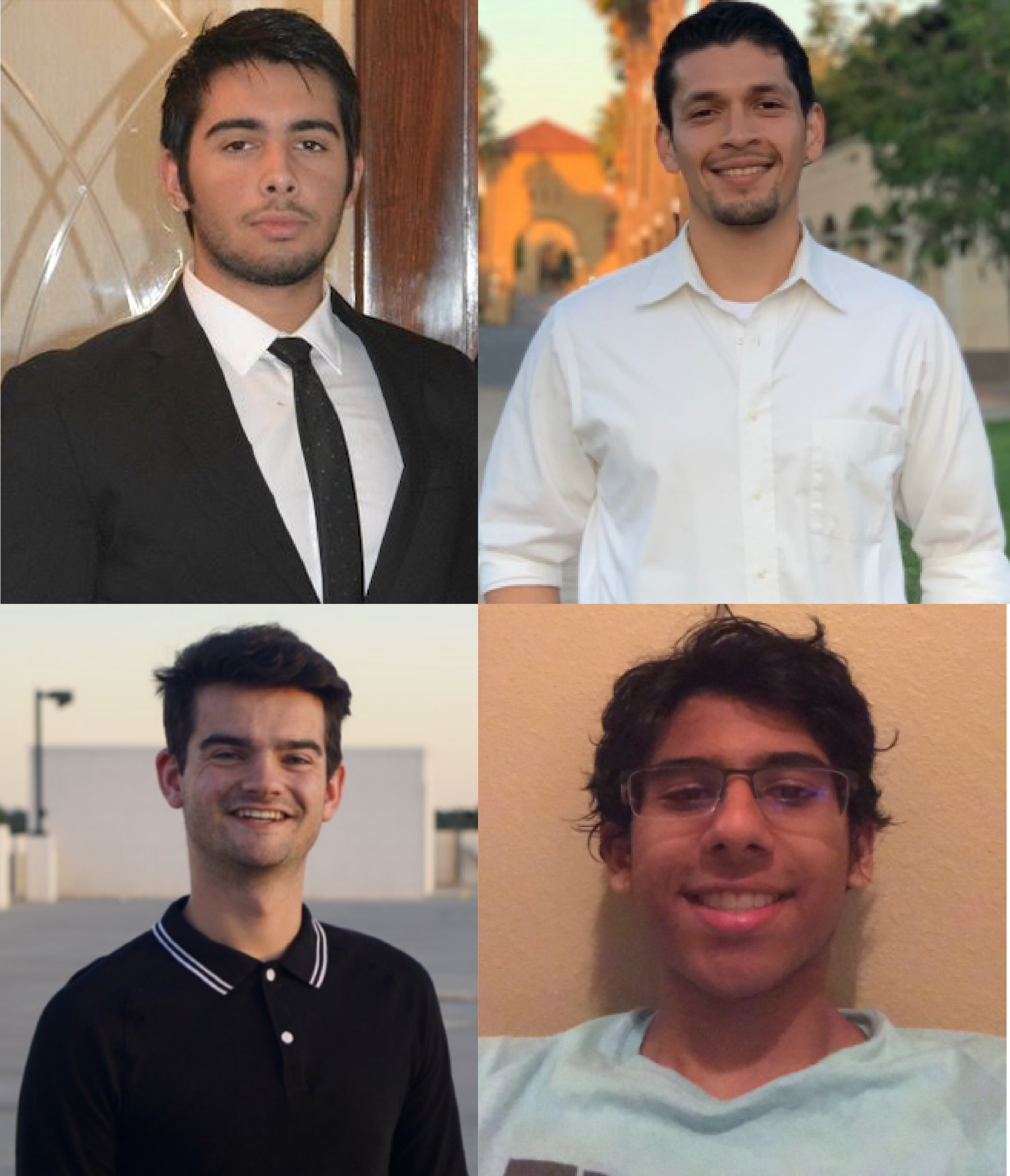
Unexpected Delays due to the Ongoing Pandemic

The coronavirus pandemic has negatively impacted all of our lives and our lab is no different. The movement and human subject testing restrictions now in place have forced modifications to the original NeuroExo plan. This includes the cessation of the originally planned human clinical testing over the summer. Additionally, due to product delays, we must now source a different processing unit for the Brain Machine Interface. Bench testing of this new processing unit will replace the originally scheduled clinical tests for the summer in preparation for the at-home tests in 2021.
Revision 3 of the Rehabilitation Device Received from Harmonic Bionics Inc. and H.Robotics
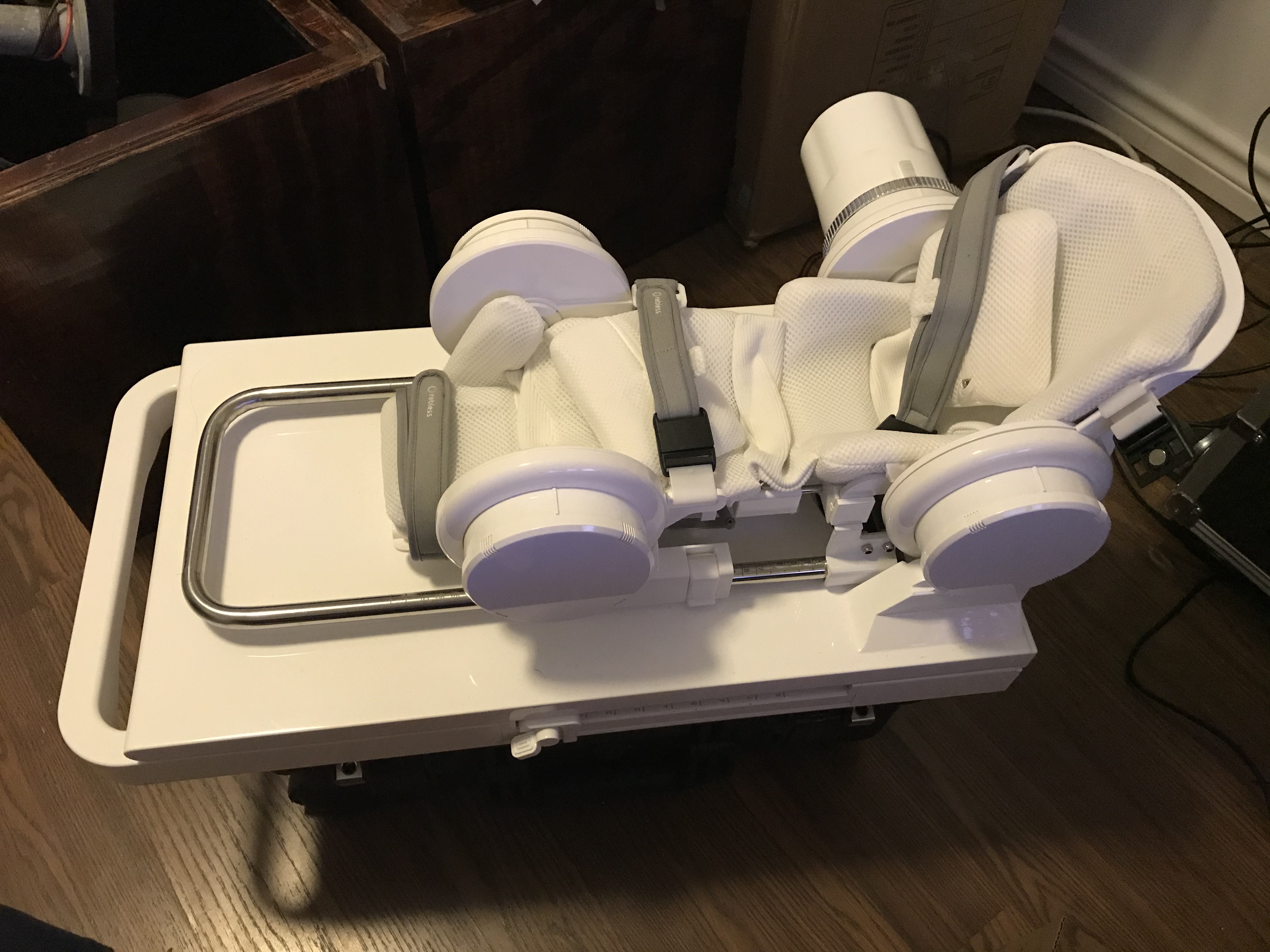 Representatives from Harmonic Bionics Inc. and their industrial partner H.Robotics deliver and test the new revision of the rehabilitation device.
Representatives from Harmonic Bionics Inc. and their industrial partner H.Robotics deliver and test the new revision of the rehabilitation device.Revision 2 of the Customized EEG Headset for the Brain-Computer Interface
 Annaleise Gray, a design student from the UH College of Architecture and Design, working under the mentorship of Profs. Pepe Contreras-Vidal and Jeff Feng, delivers the next revision of our custom EEG headset. Here, she demonstrates the use of both the headset and the motorized rehabilitation device.
Annaleise Gray, a design student from the UH College of Architecture and Design, working under the mentorship of Profs. Pepe Contreras-Vidal and Jeff Feng, delivers the next revision of our custom EEG headset. Here, she demonstrates the use of both the headset and the motorized rehabilitation device.Revision 2 of the Rehabilitation Device Received from Harmonic Bionics Inc. and H.Robotics
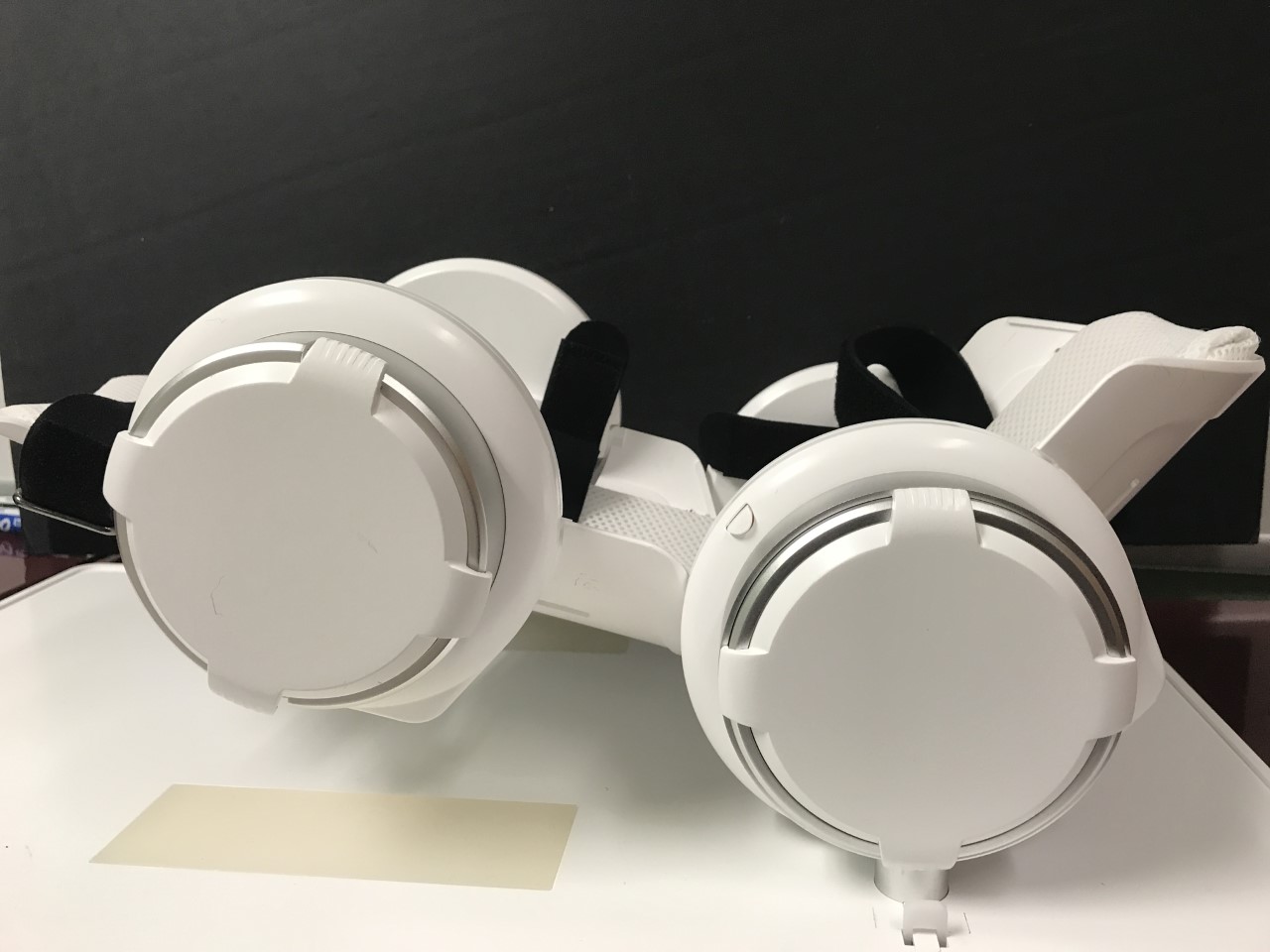
Representatives from Harmonic Bionics Inc. and their industrial partner H.Robotics deliver and test the new revision of the rehabilitation device.
REU Students Present at the REU Poster Session
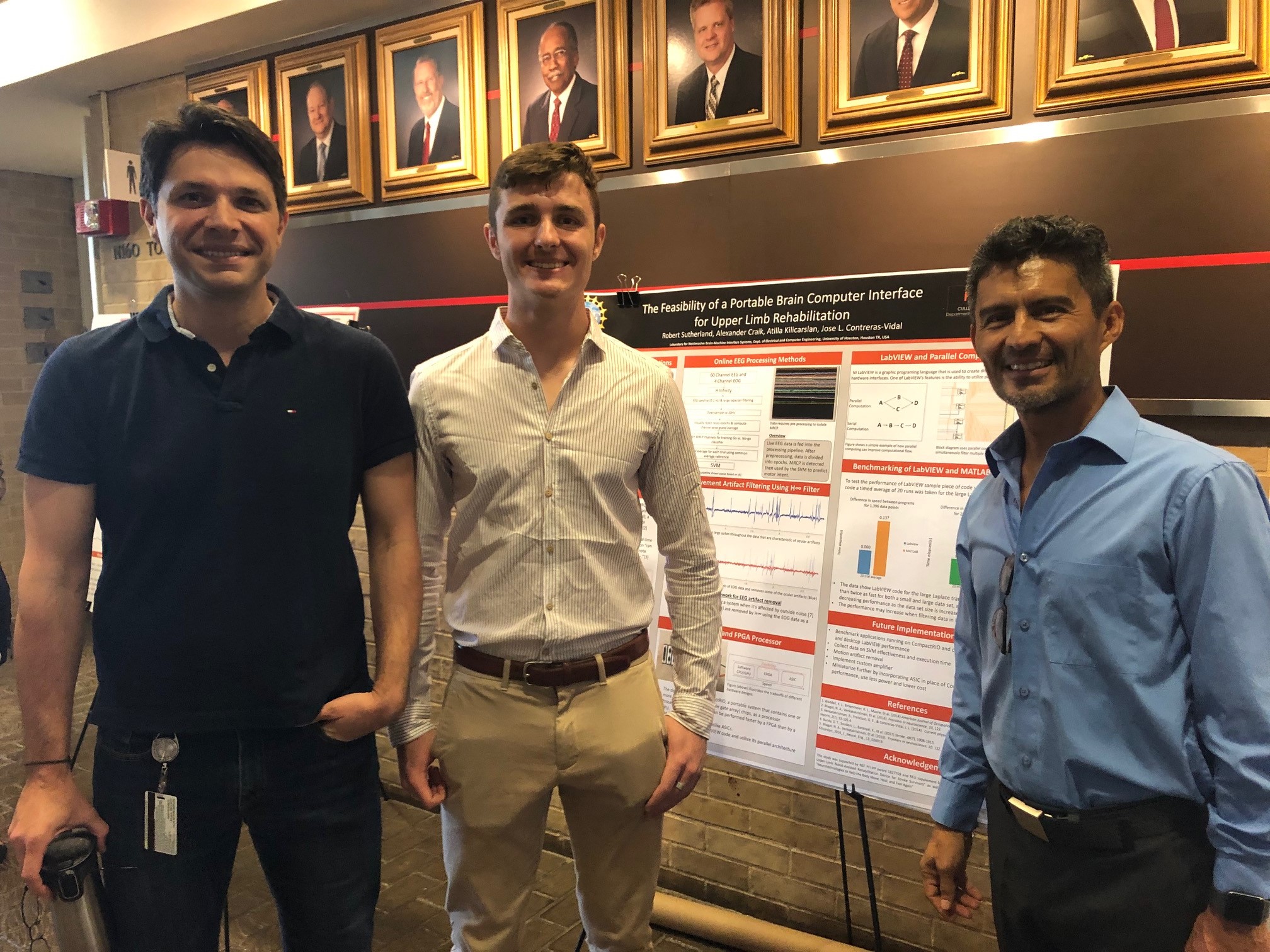
Atilla Kilicarslan, Robert Sutherland (REU), Jose Contreras-Vidal
The Feasibility of a Portable Brain Computer Interface for Upper Limb Rehabilitation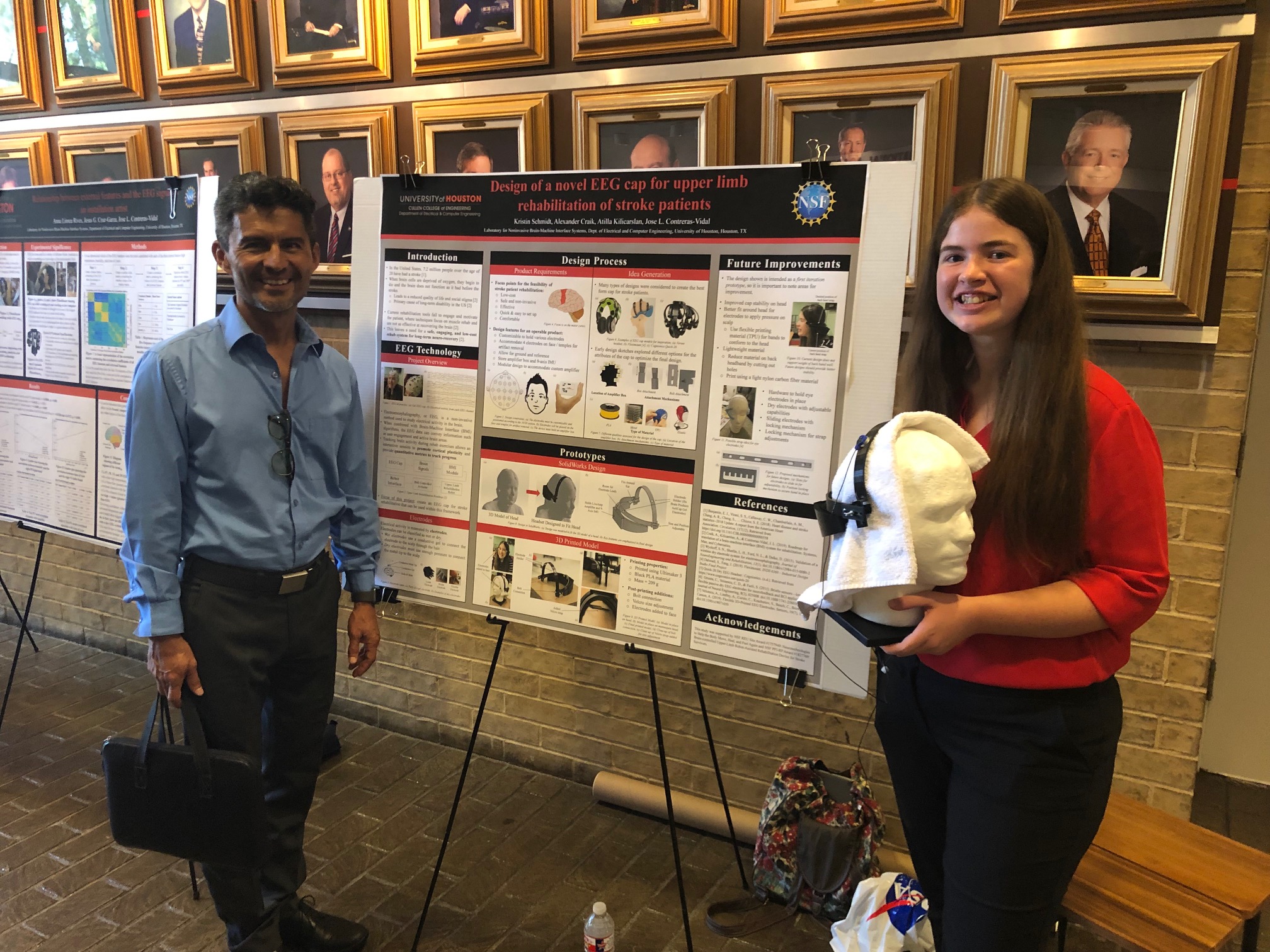
Jose Contreras-Vidal, Kristin Schmidt (REU)
Design of a novel EEG cap for upper limb rehabilitation of stroke patientsTIRR Visit
The NeuroExo project is a collaboration between several partners in academia, industry, and medicine. On June 3rd, the University of Houston, Harmonic Bionics, and TIRR Memorial Herman Hospital met up to discuss the progress of the project. Harmonic Bionics demonstrated their upper limb rehab device, and the University of Houston provided updates on the BMI roadmap.Ruofan, High School Intern from Carnegie Vanguard, joins our team
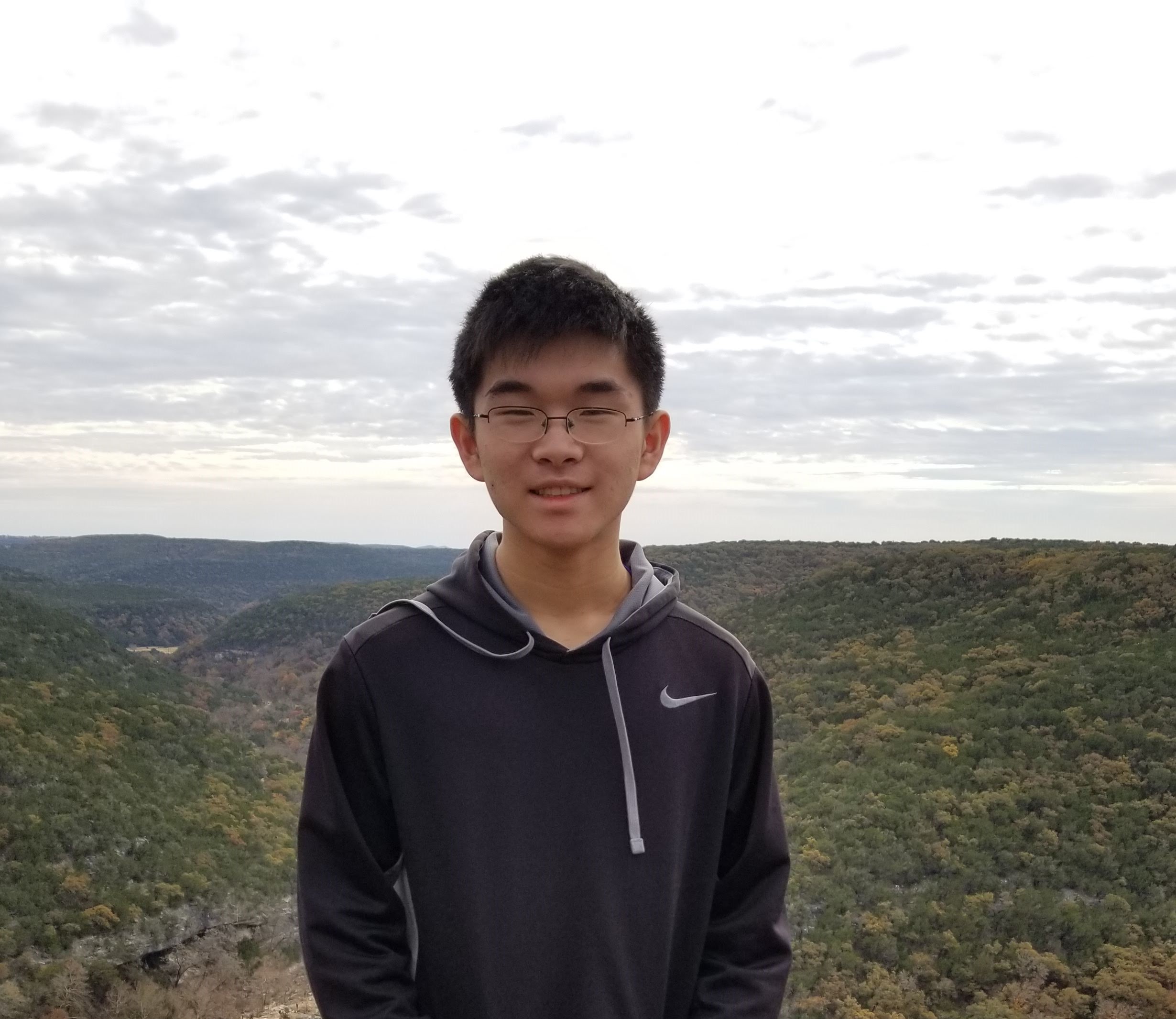
Ruofan a rising Junior at Carnegie Vanguard High School will be working with us as a web designer and research assistant for this summer and beyond.
Professor Contreras-Vidal was a speaker at the 2nd Annual CNS Neuroregeneration Strategies Symposium
Professor Contreras-Vidal was a speaker at the 2nd Annual CNS Neuroregeneration Strategies: Discovery and Implementation Symposium held at Houston Methodist Research Institute, Houston Texas, his talk was Neuroengineering the Future of Basic and Clinical Research: Challenges and Opportunities.

Welcome 2019 REU Students
The PFI team would like to welcome Robert Sutherland from the University of Southern California and Kristin Schmidt from the University of Virginia, who are joining us as REU students.
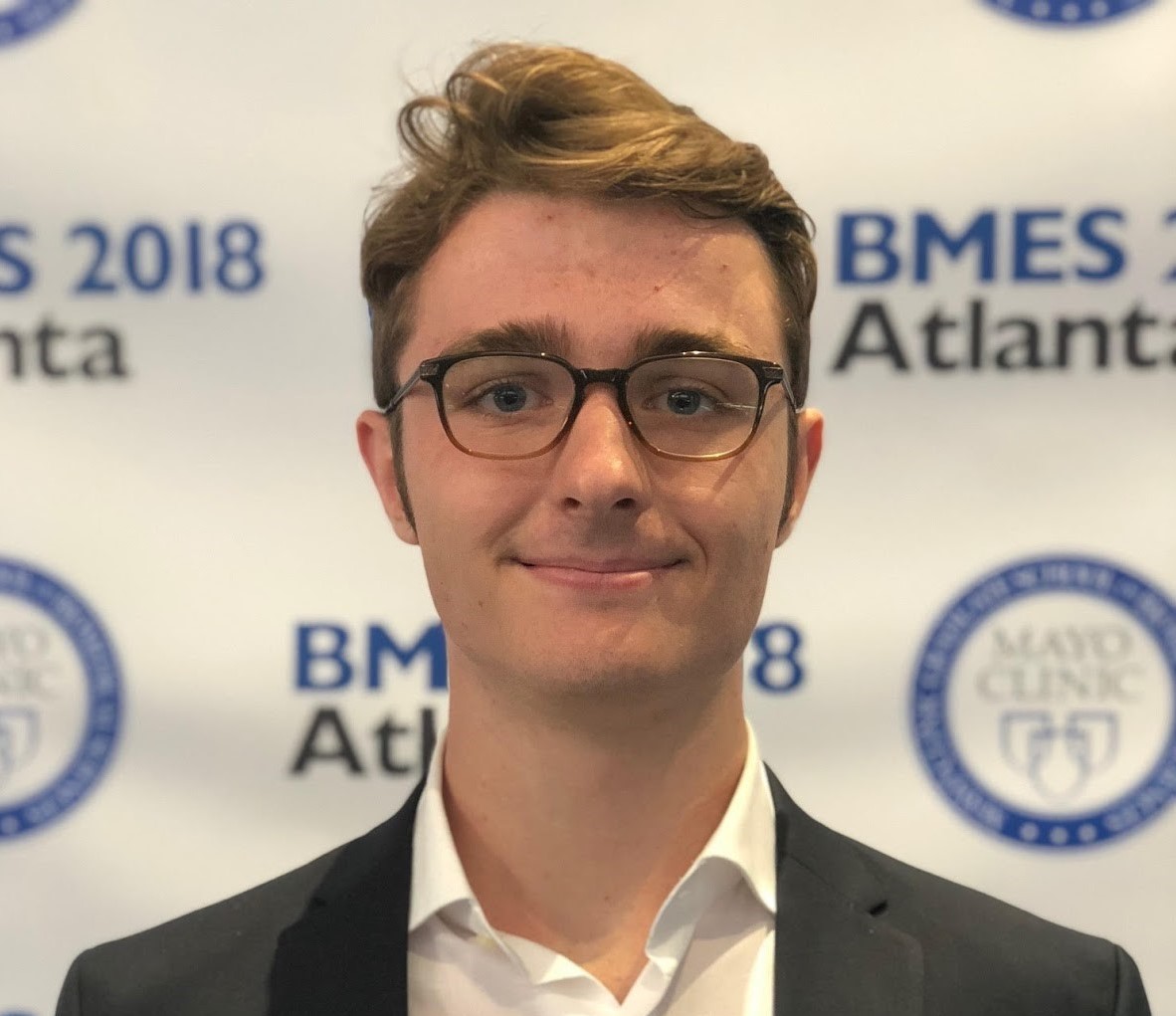
Robert Sutherland Kristin Schmidt PFI Kickoff Meeting
On September 26th, the first meeting of collaborators took place with researchers from the University of Houston, the University of Texas Health Science Center/TIRR Memorial Hermann, Harmonic Bionics, Inc, and National Instruments.
Our PFI Project was Funded!


